Birding and Wildlife Trips in Chile
As a specialized company devoted exclusively to birdwatching, we offer an ample diversity of Birding and Wildlife Trips in Chile, an incredibly diverse country comprising a variety of landscapes from the majestic Northern Altiplano and Atacama desert to the stunningly beautiful Chilean Fjords, evergreen Subantarctic Southern Beech woods, Mediterranean forests, coastal wetlands, seashore, coastal range forest, Andean mountain valleys and bogs, Pacific ocean, in short, an array of environments as contrasting as Chile´s breathtaking geography, plus the chance to take a customized, tailor-made Trip designed to meet your most particular birding demands.
We kindly invite you to go through our web site, inform yourself about everything we have to show you and get ready for a birdwatching experience to remember.
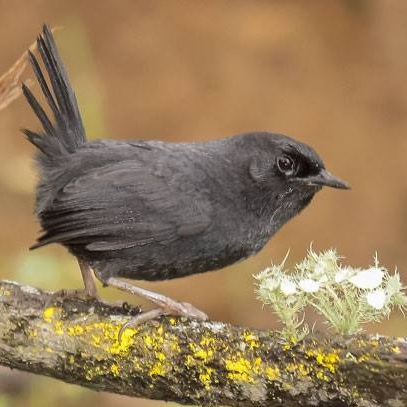

The Heart of Chile
Central Chile
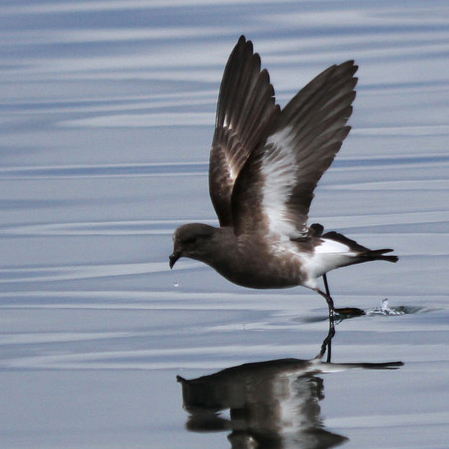
Pincoya Storm-Petrel Expedition
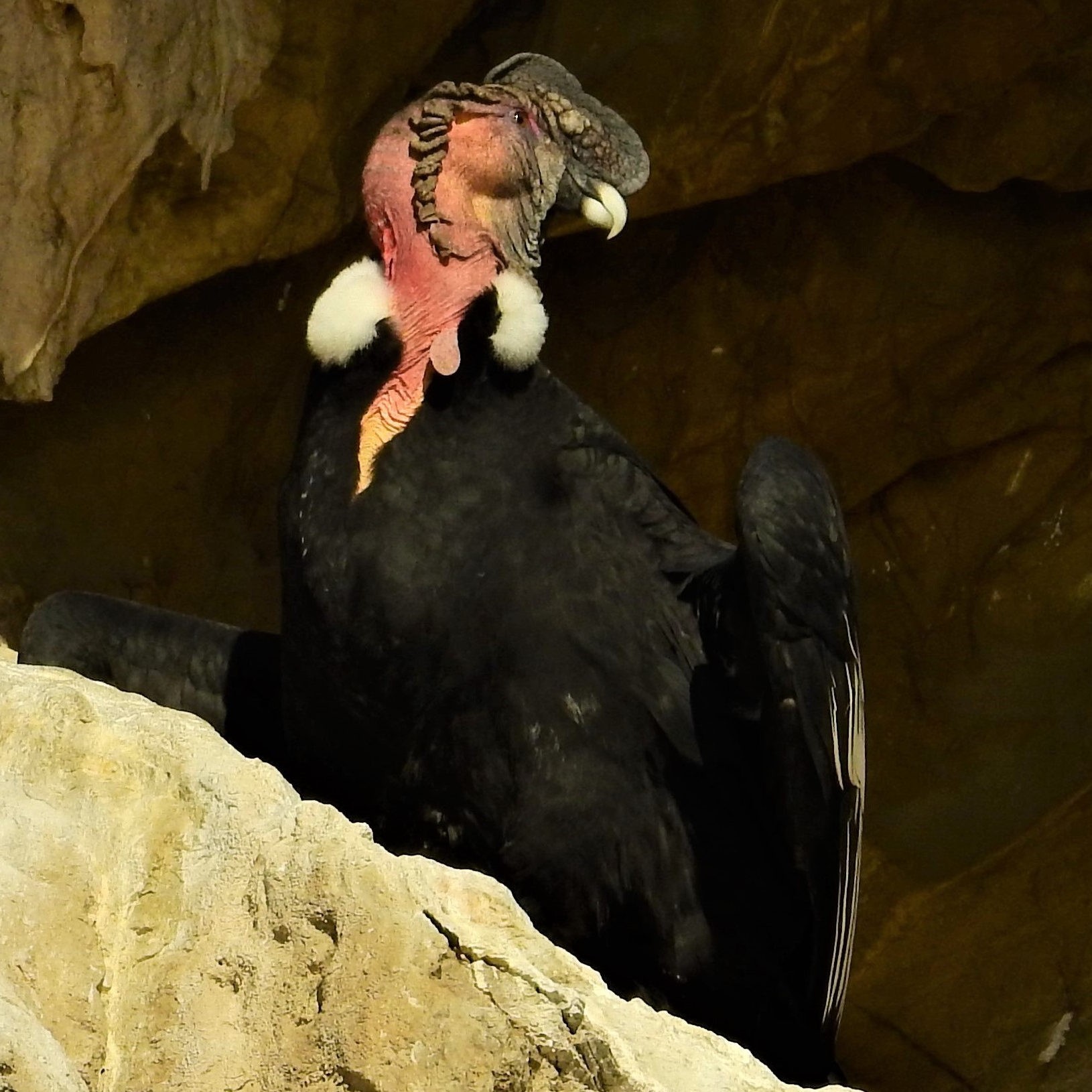
Birding Chile
Total Chile: From Atacama Desert to Patagonia & Tierra del Fuego
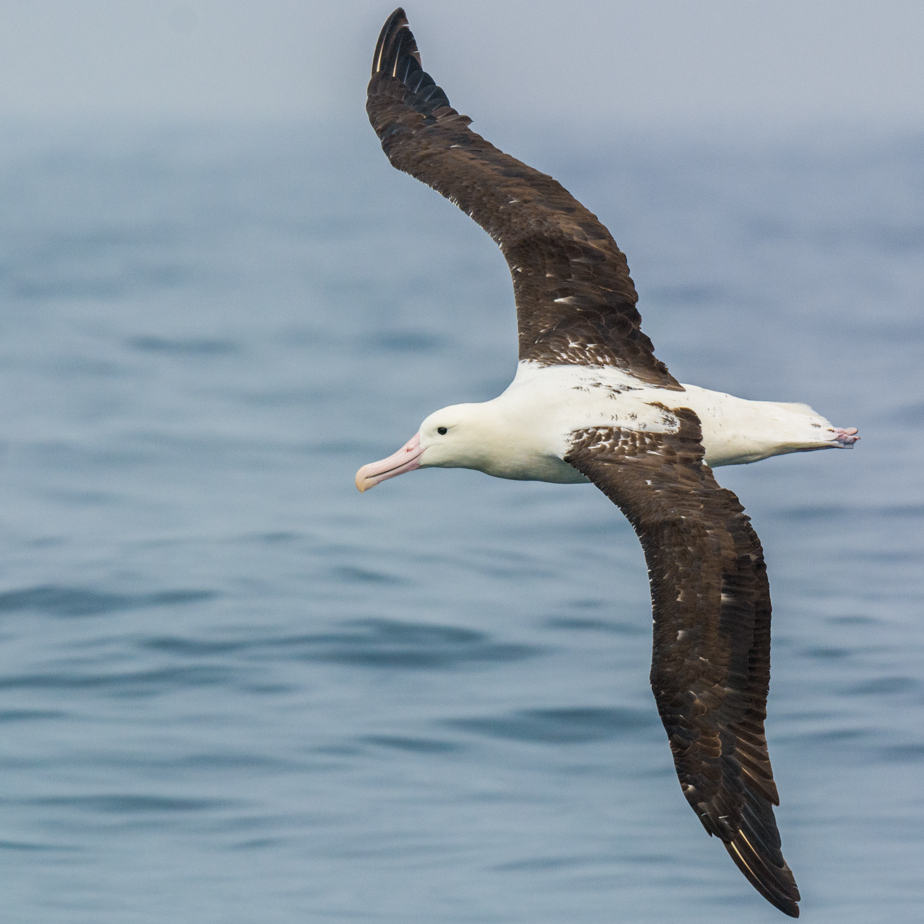
Pelagic Trips to the Humboldt Current
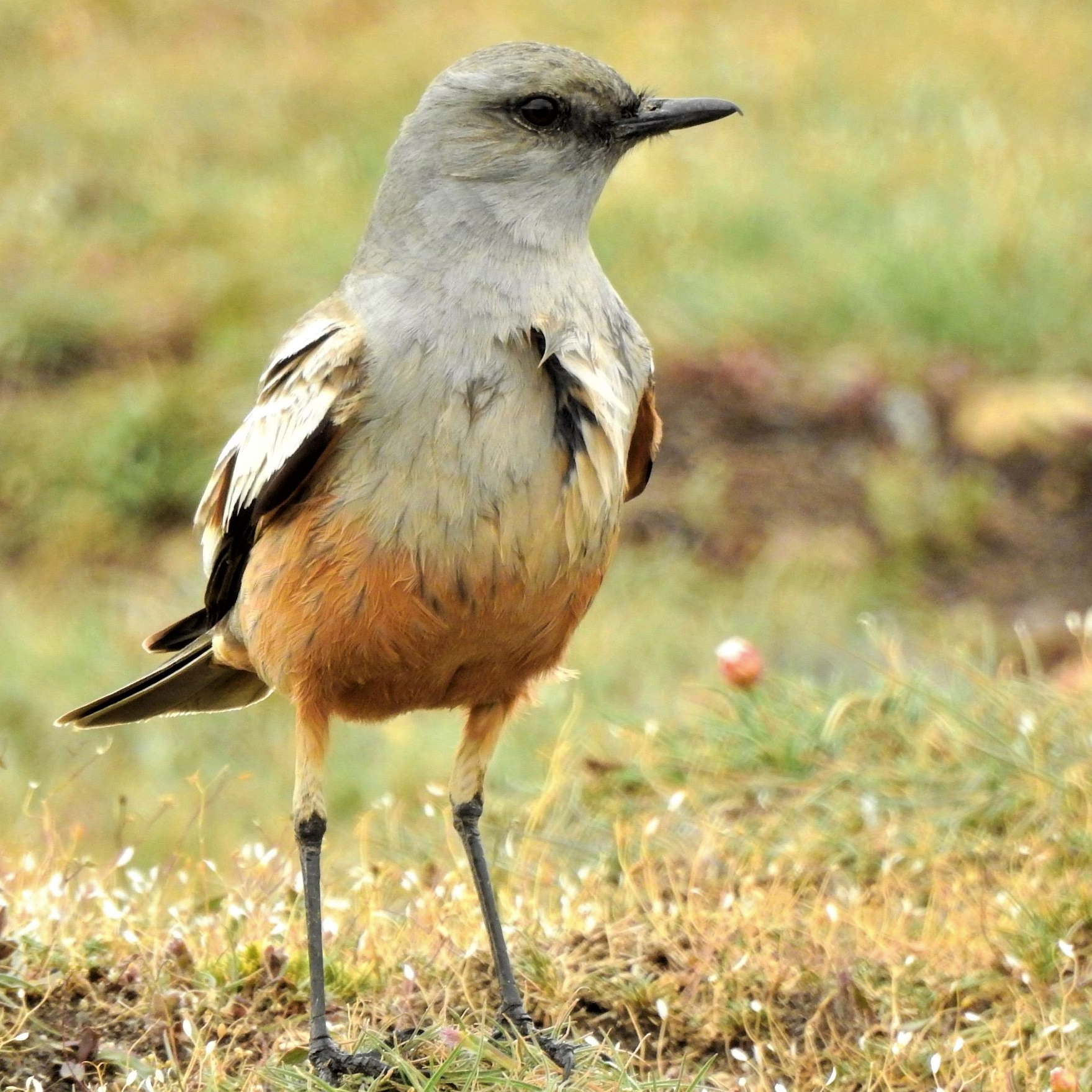
Tailor-Made Trips
Special programs: day trips.
DAY TRIPS around Santiago and Valparaiso/Viña del Mar. Depending on the available time, we offer the following Half- and Full-Day Programs:
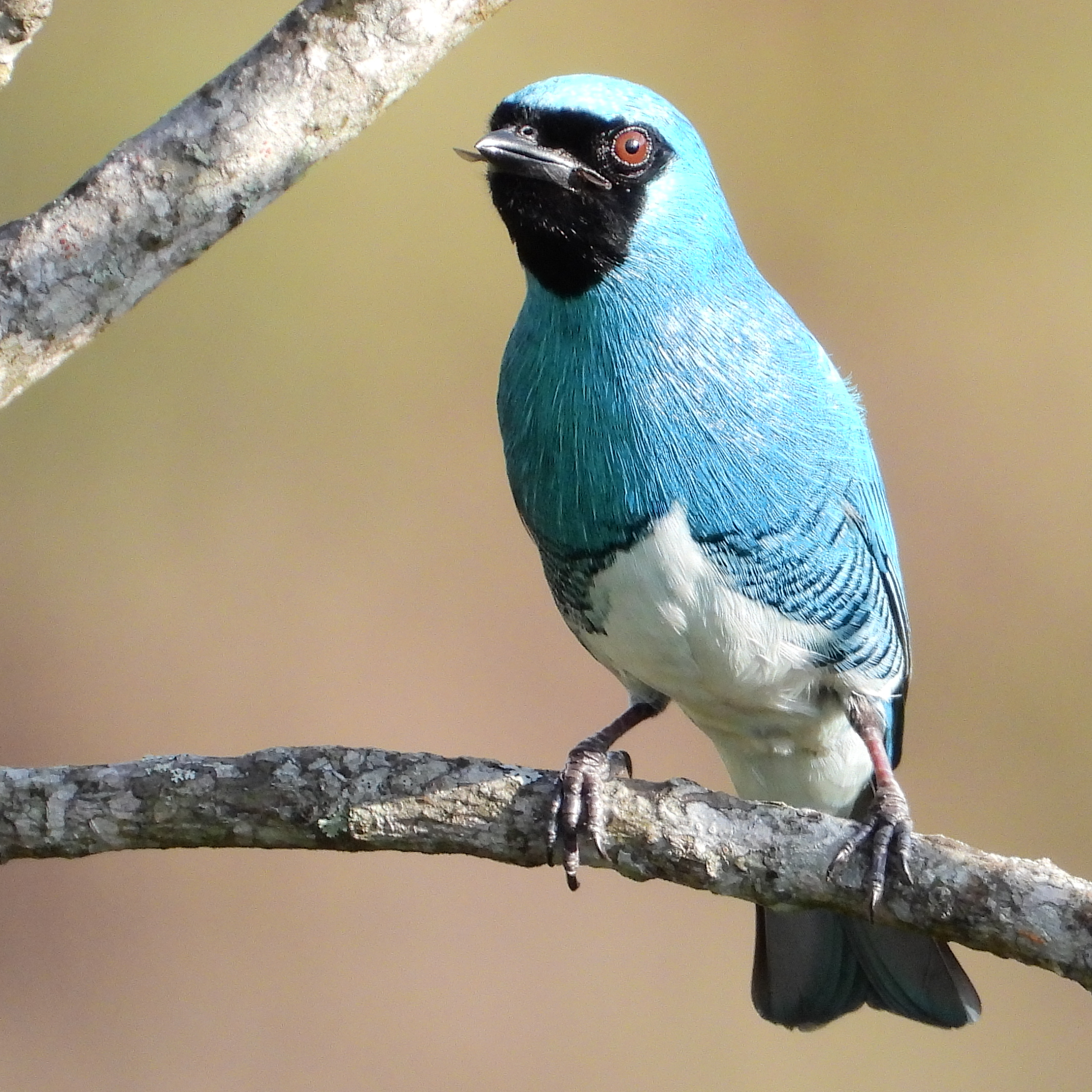
Expedición Brasil 2024
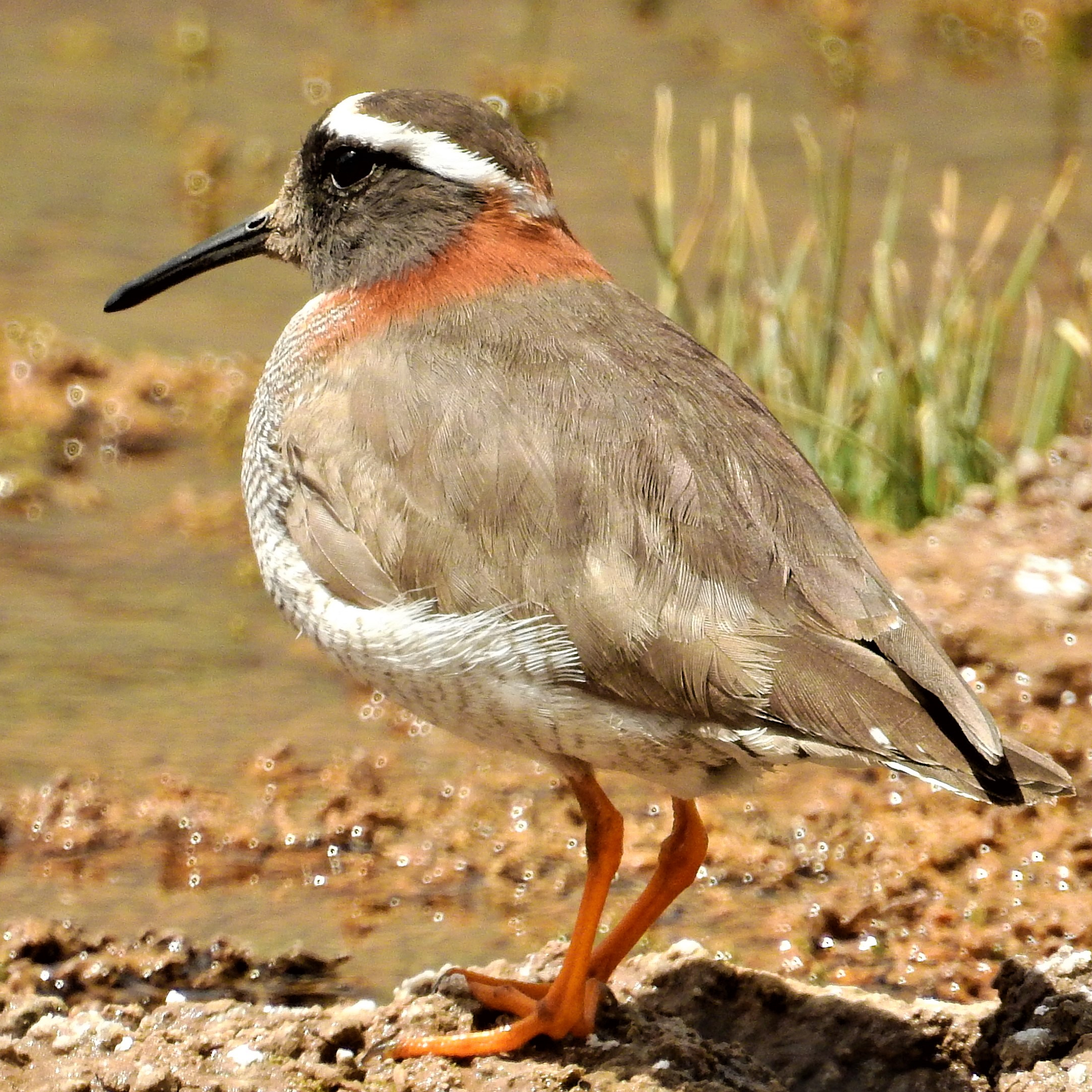
Central Chilean Andes
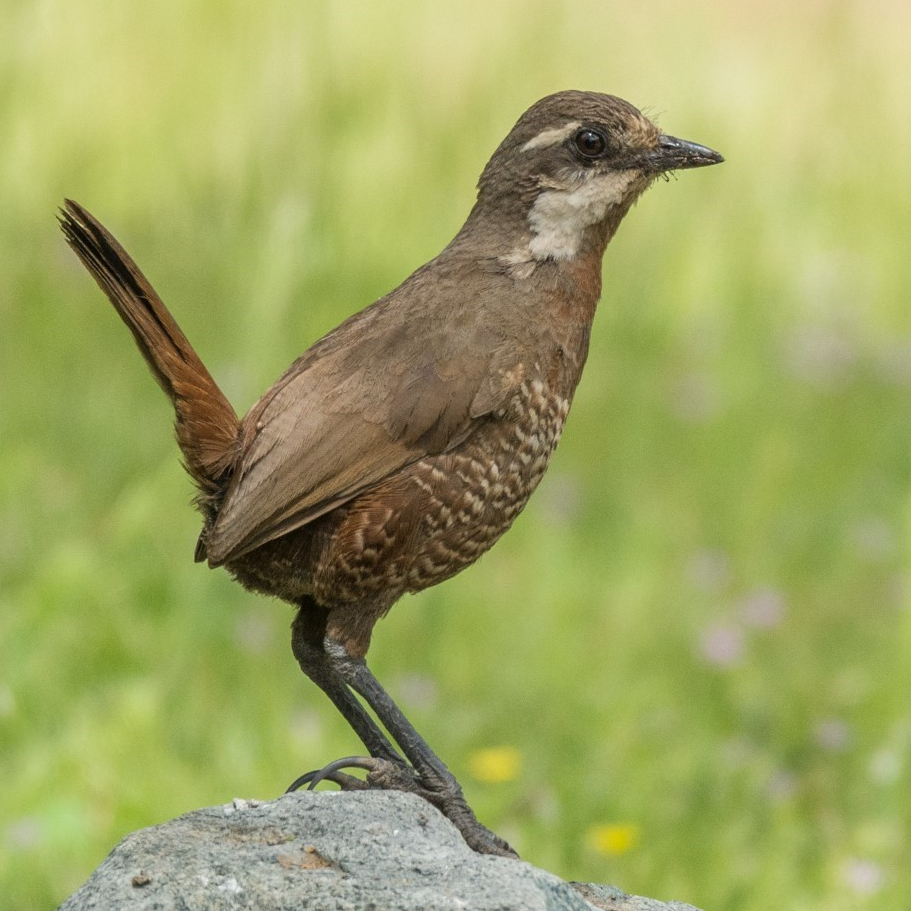
Coastal Range & Mediterranean Forest
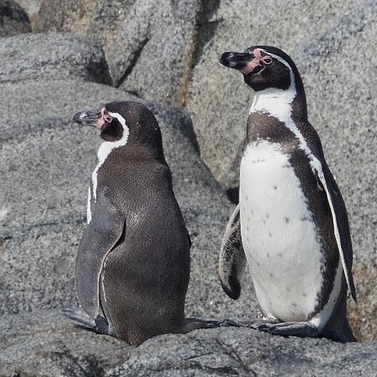
Seashore & Coastal Wetlands
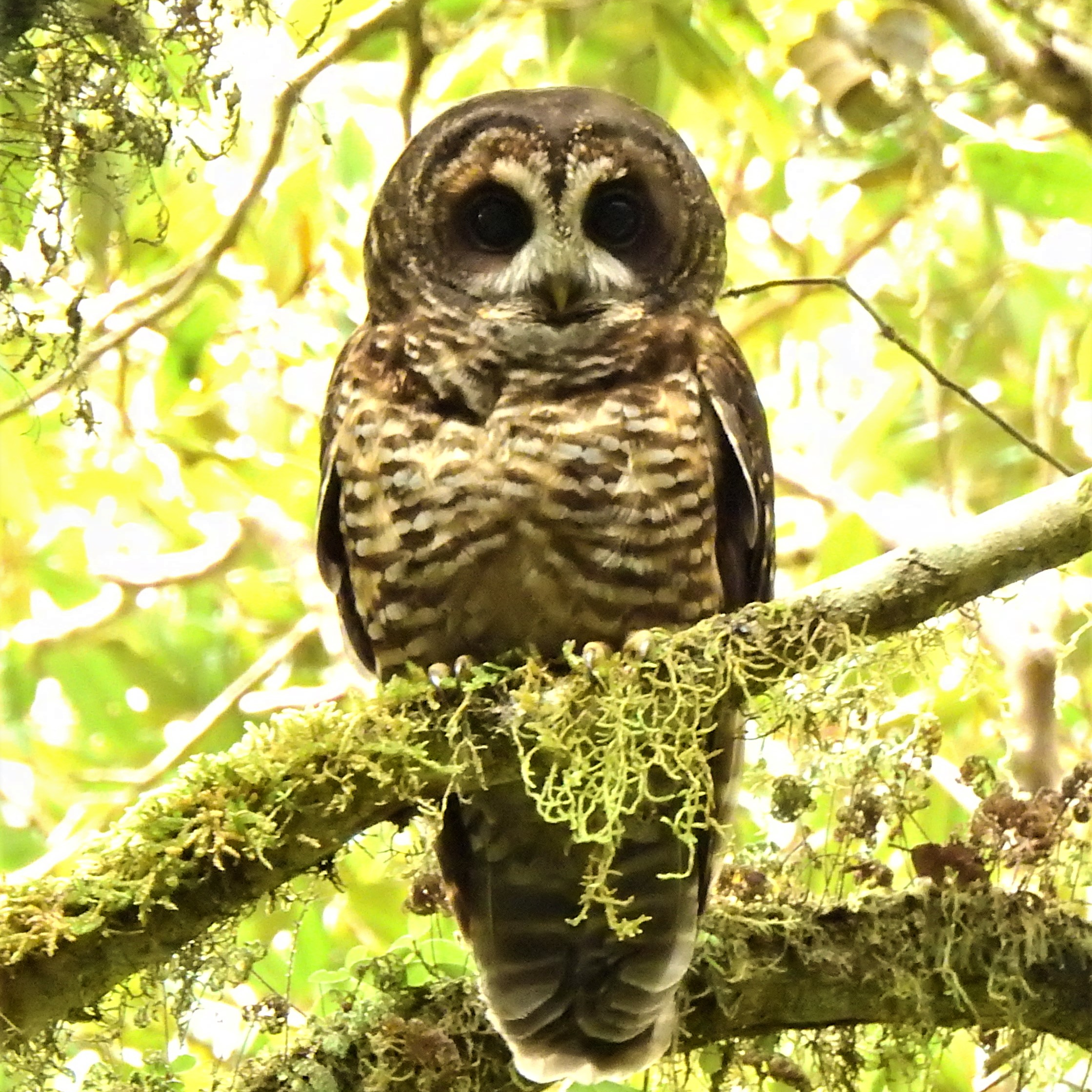
Birdwatching Chile Trips - From Northern Atacama to Southern Patagonia and from the Andes to the Pacific Ocean & the Humboldt Current:
Upcoming Trips
Oct 05 • Expedición Brasil 2024
Nov 05 • The Heart of Chile
Aug 24 • Pelagic Trips to the Humboldt Current
Dec 09 • Juan Fernandez Archipelago / Robinson Crusoe Island
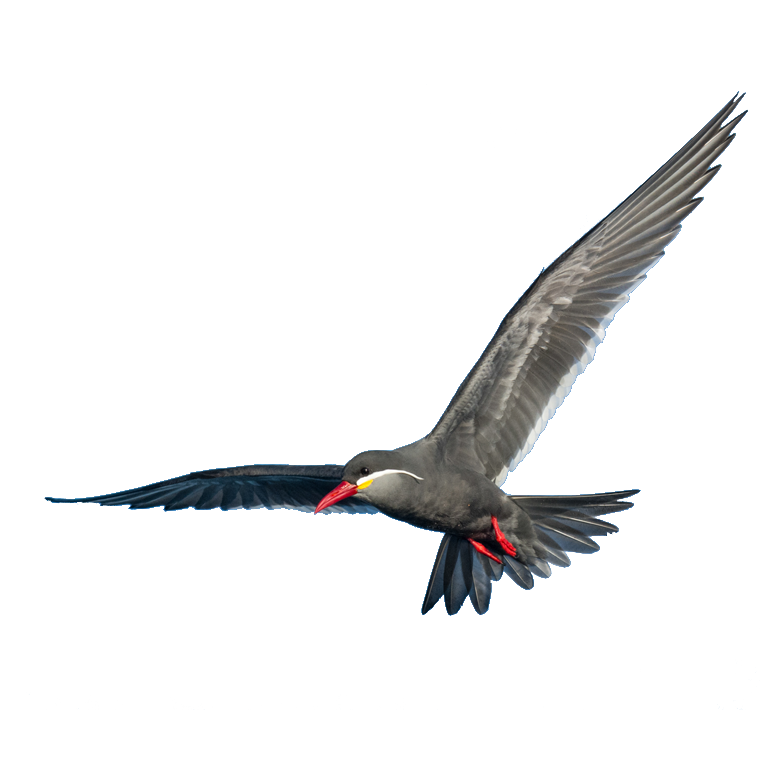
UPCUMING TRIP INFO

Cargando . . .
Ingrese nombre:
Ingrese correo:
Ingrese teléfono:
Ingrese comentario:
Desarrollado por

- Nature & Adventure Tours
- Wildlife & Birding Tours
- SUSTAINABILITY

- North & Altiplano
From the Pacific coast to the highland lakes, salt flats, wetlands, and the Atacama desert, the driest in the world.
- Central Chile
Its valleys are crossed by large rivers and concentrate a large proportion of the country's population, as well as the agricultural and wine production. The central Andes are high and imposing and the Pacific coast with the Humboldt Current is home to rich bird life and unique ecosystems.
The ancestral territory of the Mapuche culture, with large lakes and mountains covered with Araucaria forests.
Lake District & Chiloé Island
This is an area of large lakes, temperate-rainy forests, imposing volcanoes, and rivers with amazing biodiversity. The island of Chiloé is full of wetlands, myths, legends, and cultural heritage recognized by UNESCO.
- Carretera Austral
This route is the gateway to Chilean Patagonia. It goes through National Parks, ancient alerce forests, glaciers, steppes, and Patagonian fjords.
- South Patagonia
This is the southernmost area of the American continent. A cold land with strong winds, covered with extensive Patagonian steppes, fjords, glaciers and subantarctic forests.
- Route of the Parks of Patagonia
This route runs through 17 National Parks, through the Carretera Austral, the Patagonian fjords, and the Route of the end of the world.
Destination
- Lake Distric & Chiloé Island
Travel for Rewilding
Experiences in nature, expeditions and nature trips throughout chile, since 2009., immersion in nature, bird and wildlife observation, rewilding, adventure travel, culture, and communities., the highest standards of sustainability in operations and expedition guidance., active commitment to the conservation of ecosystems and support for local communities., our purpose: at birdschile we design the best tourist experiences that highlight the natural heritage of chile and contribute to its dissemination and regeneration..
Offical partner

North & Altiplano, Central Chile, Lake District & Chiloé Island, South Patagonia, Route of the Parks of Patagonia
From desert to ice: birds of chile.

From Desert to Ice: Birds of Chile, is a unique and the most complete birding adventure through one of the most spectacular landscapes on Earth. Birds will take us from the high Andean plateau at the edge of the driest desert in the world to the fertile valleys, the sclerophyll forests and the rich Humboldt Current in the central Pacific coast, where we will enjoy one of the most productive pelagic trips of the southern hemisphere. The dramatic changes in the landscapes get their climax while w...
Lake District & Chiloé Island
Wildlife of chiloe & lake district.

The best way to explore the off-the-beaten-path areas of the Lake District and uncover the unique wildlife of its stunning landscapes in southern Chile. We will cover an impressive array of ecosystems, from large wetlands facing the Pacific ocean to exuberant and dense temperate rainforest near the Andes and the volcanoes line, to finally reach the most remote and wild section of the main island of the Chiloé archipelago where the ocean embrace the forest and wildlife have a vast area to...
Lake District
Three lakes and volcanoes crossing.

An exclusive and carefully crafted trekking adventure connecting three lakes and three volcanoes threw off the beaten trails of the Lakes District. An epic journey that combines a wide array of experiences: Trekking through the north face of the Osorno Volcano, a boat navigation through the emerald waters of the Lake Todos Los Santos, a two day trekking to cross the valley of the Puntiagudo Volcano and a final hot spring experience at the shore of the Lake Rupanco and the base of the Casa...
Testimonials
For thoroughly organised, completely trouble free trips with a highly knowledgeable and personable guide, I would highly recommend BirdsChile
We had a fantastic trip from the journey to the return to the airport. Everything was professional, well run but still friendly and had a nice casual enjoyable atmosphere
Birds Chile not only provided great days out but also clearly support local sustainable tourism and conservation. Highly recommended

Travel to Rewild & Giving Back
Memberships & certifications.

Nature Travel Birding
Private and Small group Birding tours

Chile Birding Tour

This tour can also be booked as a private guided birding tour Next Group tour with Set Departure date: To be confirmed
Full Itinerary – Chile Birding Tour
PRE-TOUR: Arrival in Santiago Welcome to Chile, land of incredible natural wonders! After your arrival at the Comodoro Arturo Merino Benítez international airport just to the west of Santiago, you will be met by a company representative and transferred to our beautiful hotel in the well-heeled neighbourhood of Providencia.
As you may have seen on the flight in, everything here in Chile is dominated by the critical feature that is the Andes; the weather, culture, fauna and flora, scenery, cuisine and more! The other important factors that shape the country’s biological uniqueness, are the Pacific ocean to the west and the incredibly dry Atacama desert to the north. The flora and fauna of the country are characterised by a high degree of endemism due to these particular geographical barriers.
Santiago is Chile’s capital and largest city, situated in the country’s central valley at an altitude of 400 to 700 metres (1,312 to 2,297 ft) above sea level. The city, Chile’s cultural, political and financial hub, was founded in 1541 by the Spanish conquistador Pedro de Valdivia. The city has a downtown core of beautiful 19th-century neoclassical architecture (most earlier buildings were destroyed by several earthquakes) and winding side-streets, dotted by art deco and neo-gothic building styles. But the city also has an ultramodern side to it, with glass-covered skyscrapers, world class restaurants and bass-pumping nightclubs. The city has many museums, theatres and libraries, along with modern malls and casual eateries. Santiago’s cityscape is shaped by several stand-alone hills and the fast-flowing Mapocho river, lined by gorgeous, verdant parks, perfect for hiking or biking. The mighty Andes mountains, to the east, can be seen from most points in the city, while the Chilean coastal mountain range lies to the west. It is a buzzing, vibrant city, probably the most modern in all of Latin America.
If you arrive with some time to spare, it might be worth it to go for a stroll in one of the city’s many beautiful parks. Here you could already tick your first trip species, including Chimango Caracara, Austral Thrush, Eared Dove, Shiny Cowbird, Austral Blackbird, Monk Parakeet, Rufous-collared Sparrow, Chilean and Blue-and-white Swallow, House Wren, White-crested Elaenia, Tufted Tit-Tyrant, Black-chinned Siskin and many others. We also suggest you go and try one of Santiago’s restaurants tonight; the experience is always fantastic. The city boasts some of Latin America’s best cuisine and it is usually combined with amazing views. Buen provecho!
Day 1: Santiago and the Andean Range We will meet up and enjoy breakfast together at our hotel and then head out for our first official birding day of the tour.
We will enjoy a full day at different areas and natural reserves of the Andean Range near Santiago looking for the endemics and the specialties of this area. Depending on local weather conditions and recent sightings, we will decide on exactly where to go.
We will definitely bird in the stunning area of the twin ski resorts of Farellones and Valle Nevado to the east of the city, looking for several special Andean species. We will bird at relatively high elevations today, with the average being well over 2,300 metres (7,550 feet) above sea level. We could catch our first glimpse of the iconic, Near Threatened and almost mythical Andean Condor. It is Chile’s national symbol and generally considered as the largest bird of prey in the world. Other raptors to look out for include Mountain and Chimango Caracara, American Kestrel, Variable and Harris’s Hawk, Black-chested Buzzard-Eagle and Aplomado Falcon.
Some of the other special species we hope to tick in the habitats from Santiago to the lower slopes of the Andes include White-sided Hillstar (could be our first hummingbird of the trip), the secretive, endemic Chilean Tinamou, Black-faced Ibis, California Quail, Black-winged Ground Dove, near-endemic Chilean Mockingbird, two endemic tapaculos (Moustached Turca and White-throated Tapaculo), Chilean Flicker, Long-tailed Meadowlark, Grey-breasted Seedsnipe, Cinereous, Ochre-naped, Black-fronted, Rufous-naped and White-browed Ground Tyrant, Rufous-tailed Plantcutter, Cordilleran Canastero, Rufous-banded and Creamy-rumped Miner, Grey-hooded Sierra and Greater Yellow Finch, Buff-winged Cinclodes, Yellow-rumped Siskin, and with some luck even Lesser Horned Owl or Austral Pygmy Owl. We will find a nice spot somewhere today and enjoy a packed lunch.
In terms of mammals, with some luck we could see Southern Mountain Viscacha, Andean and Argentine Grey Fox, as well as the endemic, burrowing Cururo.
After returning to Santiago in the late afternoon, we will get together for our official Nature Travel Birding tour opening dinner at our hotel. We will discuss our plans and the target fauna and flora species for the exciting tour ahead (maybe having ticked some lifers already!) so that everyone gets a chance to enjoy themselves fully and create memories that will last a lifetime.
Day 2: Central Chile We will enjoy an early breakfast at our hotel and then set off in a southeasterly direction towards the Andes again.
We will have a full day of exploring the El Yeso and Maipo valleys looking for some specialties of the area. The El Yeso valley has wide altitudinal differences (1,300 to 3,000 metres above sea level), varying habitats (shrubland, boggy marshes, wetlands and more) and spectacular scenery, so it is perfect for birding! The huge El Yeso reservoir in the valley is a major source of Santiago’s drinking water and will be one of our stops today. The equally scenic Maipo valley also has a wide altitudinal range, and is one of the country’s most famous winemaking regions, known the world over for especially the excellent Cabernet Sauvignon made here. The huge Concha y Toro winery has its headquarters here. It is the largest producer and exporter of wines from Latin America and one of the 10 largest wine companies in the world.
Today we are looking for species such as the beautiful Near Threatened Diademed Sandpiper-Plover (one of the top target birds of our trip), Upland and Andean Goose, Torrent and Crested Duck, White-cheeked Pintail, Red-gartered Coot, South American Snipe, Southern Lapwing, Black-chested Buzzard-Eagle, Mountain Parakeet, Giant Hummingbird, Picui Ground Dove, sought-after Crag Chilia, endemic Moustached Turca, Black-billed Shrike-Tyrant, Fire-eyed Diucon, Yellow-rumped and Thick-billed Siskin, Least and Grey-breasted Seedsnipe, Dusky-tailed Canastero, Striped Woodpecker, Rufous-banded and Creamy-rumped Miner, Buff-winged and Grey-flanked Cinclodes, Cordilleran and Sharp-billed Canastero, Scale-throated Earthcreeper, Tufted Tit-Tyrant, Plain-mantled Tit-Spinetail, Greater Yellow Finch and many, many others.
We will once again enjoy a packed lunch in a beautiful spot somewhere during the day. We will return to our comfortable hotel in Santiago in the late afternoon, freshen up and have dinner (maybe with a glass of Chilean Cabernet!) while we update our growing trip lists. Then we are off to bed for a good night’s rest.
Day 3: La Campana National Park & coastal wetlands We will again start our day with breakfast in the hotel, after which we check out and pack the vehicle.
Then we head northwest. We have an exciting day ahead, as we leave the Andes mountains behind and head to the Pacific.
But before we reach the ocean we will stop at the coastal mountain range forests of La Campana National Park. The 80 km2 (31 sq mi) UNESCO Biosphere Reserve (along with Lago Peñuelas National Reserve), is named after a local mountain top of the same name and is important because it contains one of the last palm forests of Jubaea chilensis (Chilean Wine Palm). The park also contains the best example of matorral, a lowland, savannah-like shrub habitat that dominates here. Interestingly, Charles Darwin explored the park on one of his round-the-world voyages in 1834; we will be following in the famous naturalist’s footsteps!
The park is the best place to look for elusive species such as the Dusky-tailed Canastero, and Dusky and White-throated Tapaculo. Other species we could find include Black and Turkey Vulture, White-throated Hawk, Chilean Tinamou, Austral Pygmy Owl, Chilean Pigeon, Giant Hummingbird, Green-backed Firecrown, Striped Woodpecker, Chilean Mockingbird, Great Shrike-Tyrant, Moustached Turca, White-throated Treerunner, Thorn-tailed Rayadito, Chilean and White-crested Elaenia, Common Diuca Finch and Warbling Doradito.
After an exciting morning we will have a packed lunch in a nice spot and then continue to the ocean. Famous author Stephen King wrote the following about the Pacific ocean in his famous short story-turned hit film Rita Hayworth and Shawshank Redemption, “They say the Pacific has no memory. That’s where I want to live the rest of my life. A warm place with no memory.” Let’s hope it’s a nice, warm day for us at the ocean today.
We will spend some time in the afternoon at one or more of the many coastal wetlands and ponds on the way to our destination for the evening. These wetlands are very productive, and we could tick a great number of water-associated birds. Just some of the species we could see include the beautiful Many-coloured Rush Tyrant, Snowy Egret, White-faced Ibis, the Near Threatened Peruvian Pelican, the Vulnerable Humboldt Penguin, Yellow-billed Pintail, Chiloe Wigeon, Lake Duck, Yellow-billed Teal, Red Shoveler, Great, Pied-billed and White-tufted Grebe, Black Skimmer, Stripe-backed Bittern, Red-gartered, Red-fronted and White-winged Coot, Guanay, Neotropic and Red-legged Cormorant, Peruvian Booby, the Near Threatened Inca Tern, Southern Lapwing, Franklin’s, Brown-hooded and Kelp Gull, Hudsonian Whimbrel, Spot-flanked Gallinule, Plumbeous Rail, Hudsonian Godwit, Sanderling, White-backed and Black-necked Stilt, Ruddy Turnstone, the Near Threatened Semipalmated Sandpiper, Blackish and American Oystercatcher, Cinereous Harrier, Burrowing Owl, Wren-like Rushbird, Spectacled Tyrant and Yellow-winged Blackbird.
Our overnight stop tonight is the port city of Quintero, founded in 1836 by Spanish navigator Alonso Quintero. We will enjoy the hospitality and food on offer in our seaside hotel. We will update our lists and get a good night’s rest; tomorrow we head out into the Pacific!
Day 4: Humboldt current pelagic & Pacific coast We start with a very quick and very early breakfast in the hotel restaurant this morning. Then we either depart from Quintero or drive a little south to Valparaiso to board our boat for our morning pelagic trip. This will be one of the (many) highlights of this Chile birding trip, and even more so if you haven’t done a pelagic trip before. Getting up close with seabirds, and albatrosses in particular, is truly a remarkable and humbling experience. On top of this the cold Humboldt current, that flows north from the Antarctic, all along the western coast of South America, is considered one of the best pelagic destinations on Earth! It is an incredibly rich marine ecosystem, with all the nutrients in the water making it easy to observe some spectacular avifauna and mammals.
Some of the species (including many endemics and endangered ones) of the pelagic could be Salvin´s, Buller’s, Chatham, Wandering, Antipodean, Black-browed, Northern Royal and Southern Royal Albatross, Northern and Southern Giant Petrel, Westland, De Filippi’s, Juan Fernandez, Cape and White-chinned Petrel, Wilson’s Storm Petrel, Peruvian Diving Petrel, Pink-footed, Buller’s and Sooty Shearwater, Parasitic Jaeger, Southern Fulmar, Peruvian Pelican, Humboldt and Magellanic Penguin, Peruvian Booby, Guanay and Red-legged Cormorant, Red Phalarope, Sabine’s, Grey, Franklin’s and Kelp Gull, Inca, Elegant and South American Tern, Surfbird, Chilean Skua and others. We also need to be on the lookout for rarities; anything could turn up on these exciting days at sea!
The current is also a hotspot for marine mammals and we could see species like Humpback, Sperm and Killer Whale, Bottlenose, Dusky and Southern Right Whale Dolphin, South American Sea Lion and many others.
After our pelagic we will enjoy a boxed lunch on terra firma, before searching for some more birds we may have missed yesterday at one of the many coastal wetlands.
We will then drive back to Santiago (about 2 hours), probably to the same hotel we stayed at before. We will get together to complete our growing lists and sit down for dinner. Then we are off to bed for a good night’s rest; tomorrow a different part of our adventure starts.
Day 5: Flight to Puerto Montt & ferry crossing to Chiloé Island We will have an early breakfast and check out of our hotel in Santiago. We will drive to the airport and jump on an early flight to the port city of Puerto Montt. It is a flight to the south of about 1 hour and 40 minutes.
We are now in Patagonia, a geographical region that encompasses the southern end of South America, governed by both Chile and neighbouring Argentina. It is also sometimes known as the Southern Cone. The huge area (1,043,076 km2 (402,734 sq mi) gets its name from the word patagón, a term used by Magellan in 1520 to describe the native tribes of the region, whom his expedition thought to be giants, as they were taller than Europeans of the time. Patagonia is home to many characteristic fauna and flora species, and we hope to see some of them over the next few days.
Puerto Montt is the capital of Chile’s Lake District and the perfect place from where to visit the region’s glacial lakes, volcanoes and mountainous national parks and reserves. It has a strategic position at the southern end of the Chilean central valley and is the gateway city to the Chiloé Archipelago, the Llanquihue and Nahuel Huapi lakes and western Patagonia. It is world famous as the hub of one of the largest salmon aquaculture industries on Earth.
After landing at the El Tepual airport in Puerto Montt we will jump into our vehicle and head to the docks for a short ferry crossing to Chiloé island. The rectangular island covers about 8,400 km2 (3,250 sq mi) of dense forests, rolling hills, rocky shores and swamps. The island is famous for palafitos (colourful houses mounted on stilts along the water’s edge), curanto (a delicious meat, seafood, potato and vegetable stew cooked in a hole in the ground) and the many stunningly unique wooden churches built by Jesuit missionaries in the 17th and 18th centuries. Collectively, the Churches of Chiloé were designated as a UNESCO World Heritage Site in 2000.
We will bird in several key areas on the island to maximise our chances of seeing some fantastic species and interesting habitats. We will visit the birding hotspots of Caulín and Chacao, as well as birding along the coast and wetlands of the northern part of Chiloé.
Some of the species we could see today include huge amounts of Hudsonian Godwit and Black-necked Swan, as well as Red Knot, Franklin´s and Brown-hooded Gull, Pincoya Storm-Petrel (a newly described species), Subantarctic and Sooty Shearwater, Ringed Kingfisher, Dark-bellied Cinclodes, Yellow-billed Teal, Silvery Grebe, Black-crowned Night Heron, Coscoroba Swan, Chiloé Wigeon, Black Skimmer, Imperial Shag, Red-legged Cormorant, Baird’s Sandpiper, Greater Yellowlegs and Ruddy Turnstone among many others. During our travels we will also try to spot the endemic Slender-billed Parakeet.
We will also add a visit (by boat) to the famous breeding penguin colony of Puñihuil to spot Humboldt and Magellanic Penguins, as well as Fuegian Steamer Duck, Kelp Goose, Magellanic Oystercatcher, Rufous-tailed Hawk and many more.
Mammals that we could spot today include Humpback and (Pygmy) Blue Whale, Peale’s Dolphin, South American Sea Lion and the Endangered (IUCN RedList 2015) Marine Otter.
We will overnight in the pretty town of Ancud, at one time the capital of the Chiloé Archipelago. It boasts many fortifications from the colonial era as well as a beautiful waterfront. After our exciting day we will check into our modern hotel and freshen up. Then it’s time for dinner (the seafood in Ancud is world class and can be highly recommended) and updating our lists before falling asleep after another great day’s birding and sightseeing.
Day 6: North of Chiloé & back to mainland We start our day with breakfast at our hotel after which we check out and go and explore the island some more.
We will enjoy an early morning navigation on the picturesque Chepu river (about 45 minutes from Ancud) to look for one of the few continental nesting areas of Snowy-crowned Tern. The Chepu valley dropped about 2 metres (7 feet) during the earthquake of 1960 (at 9.5 on the Richter scale it is the most powerful earthquake ever recorded), resulting in the forming of huge wetlands. We also have good chances to spot the Striped-backed Bittern and the endangered Marine Otter. Other avian species we could see on the Chepu and the nearby wetlands include Great, Snowy and Western Cattle Egret, Brown-hooded and Kelp Gull, Black-faced Ibis, Cocoi Heron, Plumbeous Rail, White-winged and Red-gartered Coot, White-tufted and Great Grebe, Spectacled and Ruddy Duck, Red Shoveler, Chilean Hawk, Red-backed Hawk, Chucao Tapaculo, Black-throated Huet-huet, Slender-billed Parakeet, Spectacled Tyrant, Yellow-winged Blackbird and many others. We will also keep an eye out for the tiny, Near Threatened Southern Pudu, the world’s smallest deer species.
After our morning on and around the river we will enjoy a picnic lunch and then head back to the mainland. Once back on mainland Chile we will drive about 30 minutes north and do some afternoon birding at Lahuen Ñadi Natural Reserve. It is a tiny (2 km2/0.77 sq mi) area but very significant. It protects a unique type of endemic soil known as ñadi, as well as mature Patagonian Cypress trees, some of them almost 2 millennia old! The reserve has a beautiful, 900 metre long hiking trail that we will use for some birding. We could see species like Chucao and Magellanic Tapaculo, Black-throated Huet-huet, Magellanic Woodpecker, Slender-billed Parakeet, Green-backed Firecrown, Tufted Tit-Tyrant, Thorn-tailed Rayadito, Patagonian Sierra Finch, Fire-eyed Diucon, Grassland Yellow Finch and many more. Mammals that we could see here include the Southern Pudu, Argentine Grey Fox and the Near Threatened Monito Del Monte, a tiny, near-endemic marsupial.
After our walk we will make the short drive to Puerto Varas. “The city of roses” is famous for its German architecture, traditions, culture and cuisine. It is also a very scenic place, surrounded by mountains (including two snow-capped volcanoes), blue lakes and dense forests. Lovers of outdoor sports also flock to Puerto Varas, taking part in kayaking, fishing, hiking and skiing.
We will check into our boutique hotel (our home for the next two nights), get together for dinner and then head to our rooms for a good night’s sleep.
Day 7: Alerce Andino National Park (Endemics of the rainforest) Once again our day will start with an early breakfast and coffee at our hotel. The we head out for a full day birding excursion to Alerce Andino National Park, about a 90 minute drive to the southeast. We will drive along the coast through the beginning of the Carretera Austral (also known as Route 7, a 1,240 kilometre (770 mi) long highway from Puerto Montt to Villa O’Higgins, passing through rural Patagonia) with great opportunities to spot migrant shore birds.
The 400 km2 (154 sq mi) Alerce Andino National Park is stunning, located between mountains, volcanoes and the Pacific Ocean. The water-rich park contains about 50 lakes and natural ponds and is home to a large tract of millennia-old Patagonian Cypress Fitzroya cupressoides (also known as the Alerce tree, hence the park’s name); truly impressive and very much a natural national treasure. We will explore the park along the many paths surrounded by lush evergreen temperate rainforest, no doubt marvelling at the amazing fauna and flora.
We will do morning and afternoon birding sessions here, with a break at lunch time to enjoy a picnic in a nice spot, maybe close to one of the park’s many crystal clear waterfalls.
Some of the rainforest species we hope to see today include Chilean Hawk, Austral Pygmy Owl, Magellanic and Striped Woodpecker, Green-backed Firecrown, Chucao, Magellanic and Ochre-flanked Tapaculo, Black-throated Huet-huet, Des Murs´s Wiretail, White-throated Treerunner, Thorn-tailed Rayadito,, White-crested Elaenia, Chilean Pigeon, Tufted Tit-Tyrant, Patagonian Tyrant, Patagonian Sierra Finch and many others. Mammals we could see include the Vulnerable (IUCN RedList 2015) Guiña (a near-endemic, rainforest cat species), Southern Pudu, Monito del Monte, Molina’s Hog-nosed Skunk, Argentine Grey Fox and more.
After our exciting day in the rainforest we will return to our hotel in Puerto Varas. Before or after dinner we will also do some nocturnal birding at the nearby Maullín river forest for Rufous-legged Owl, Austral Pygmy Owl and Band-winged Nightjar. After a fantastic day, we are off to bed for a good night’s rest.
Day 8: Punta Arenas We will enjoy breakfast at our hotel and then check out. We will make our way to the airport and jump on a two hour flight.
We are heading south, far south, to the Carlos Ibáñez del Campo airport, located 20 kilometres from the city of Punta Arenas. Our flight of two hours will be, weather permitting, beautiful! Oceans and mountains all around us.
Punta Arenas is one of the most populous cities so far south on the planet, and an eclectic combination of age-old grandeur and modern sprawl. The city was originally established by the Chilean government in 1848 as a penal colony to assert sovereignty over the Strait of Magellan, on which it is located. During the remainder of the 1800s, due to the increasing maritime traffic and trade travelling to the west coasts of the Americas, Punta Arenas grew in size and importance. In the late 1800s and early 1900s there was also a gold rush and a boom in sheep farming around the city. In the 20th and 21st centuries the city has remained relevant because of its logistic importance as a base from which to launch Antarctic expeditions.
We will get our first look at the city as we go for a birding tour around the city itself, and then at the first steppe areas outside the city. Birding along the rocky shores of the Strait right in the city should yield species like Imperial and Rock Shag, Chilean Skua, American Oystercatcher, Crested Duck, Dolphin, Franklin’s and Kelp Gull, and South American Tern.
The vast, wind-swept steppe is the home of great specials such as the Chocolate-vented Tyrant, Band-tailed Earthcreeper, the stunning Black-throated Finch, Austral Canastero and the skulking and elusive Patagonian Tinamou. Other birds possible here include the flightless Lesser Rhea, Cinereous Harrier, Peregrine Falcon, Burrowing Owl and Correndera Pipit. There are also mammals in this seemingly inhospitable environment, including Guanaco, the Endangered (IUCN RedLidt 2016) Patagonian Huemul, Andean Fox, guinea pig-like Patagonian Cavy, Patagonian Hog-nosed Skunk and even Big Hairy Armadillo.
We will also scan the alkaline lagoons and ponds close to the city to make the first attempts to find the unique, odd-looking and Near Threatened Magellanic Plover, the sole member of its family and actually not even a plover! Other species of waterfowl and waders possible here include like Chilean Flamingo, Black-necked and Coscoroba Swan, Crested Duck, Red Shoveler, Yellow-billed Teal, Rosy-billed Pochard, Yellow-billed Pintail, Chiloe Wigeon, Upland and Ashy-headed Goose, Tawny-throated Dotterel, stunning Rufous-chested Plover, Least Seedsnipe, Wilson’s Phalarope, Baird’s and White-rumped Sandpiper, South America Snipe and many more.
We will end the day visiting the Estancia Olga Teresa (a tourism ranch northwest of the city) for spectacular views (and photos) of several (sometimes a 100 birds!) Andean Condors that use the cliffs at the ranch as a station on feeding flights.
We will return to Punta Arenas to our wonderful hotel, located between the Strait of Magellan and the city’s main square, just a few steps away from the main cultural, gastronomic, tourist and business attractions.
We have been together for more than a week now, so it might be a good time to start chatting about trips we might have planned for the coming months and years; there are so many amazing places and birds to see!
Day 9: Tierra del Fuego This morning we will start with an early breakfast and then check out of the hotel. We will take a ferry to explore the last corner of the American continent and cross the legendary Magellanic Strait. It separates mainland South America to the north and Tierra del Fuego (our destination) to the south. The strait was discovered and first traversed by the Spanish expedition of Ferdinand Magellan in 1520, after whom it is named. During the 2 hour crossing look out for whales (including endangered Sei Whales), dolphins such as Peale’s and Commerson’s Dolphin, South American Sea Lions and many sea birds, including Magellanic Penguin, Black-browed Albatross, Southern Giant and White-chinned Petrel, Southern Fulmar, Sooty Shearwater, Magellanic Diving Petrel and more.
Once on the Isla Grande de Tierra del Fuego (the main island of the Tierra del Fuego archipelago) we will hope into our vehicle and explore, driving through the small army town of Porvenir. The topography can be divided into four regions: an outer archipelago region to the south and west, a mountain region in the south, a plains region plus a sub-Andean zone in-between the last two zones. Politically the island is divided between Chile (western side) and Argentina (eastern side). The part where we will spend most of our time consists mostly of flat steppes and rolling hills, with grasses and low shrubs.
We will visit the moorland area of Baquedano Hills and the wetlands of Laguna de los Cisnes Nature Reserve. A trip highlight will be our stop at Bahía Inútil (Useless Bay) for the colony of magnificent King Penguins. It is the only known continental King Penguin breeding colony on the planet, and over the past few years these beautiful creatures have been successfully breeding here. Get your cameras ready!
Other species we could see today include Crested Caracara, Variable Hawk, Peregrine and Aplomado Falcon, Great Horned Owl, Chilean Flamingo, Upland, Ruddy-headed and Ashy-headed Goose, Crested Duck, Black-faced Ibis, Imperial Shag, Magellanic Oystercatcher, Magellanic Plover, White-rumped and Baird’s Sandpiper, Wilson’s Phalarope, Two-banded Plover, Long-tailed Meadowlark, Cinnamon-bellied Ground Tyrant, Common and Short-billed Miner, Buff-winged and Dark-bellied Cinclodes, Austral Canastero, Austral Negrito, Rufous-collared Sparrow, White-bridled Finch, Grey-hooded Sierra Finch and many others.
We will arrive at our very comfortable accommodation back in the town of Porvenir in the late afternoon or in the early evening, freshen up and have dinner while we update our lists. We will then enjoy a good night’s rest.
Day 10: Return to mainland & birding the steppe of San Gregorio Today we again start with an early breakfast before we pack up and check out. We are heading back to the mainland today. We will hop on the ferry to cross the mythical Strait of Magellan once again, this time heading west.
Once we arrive in Punta Arenas we will drive northwards. We will cross the steppe area of San Gregorio, a perfect spot for specialties such as Tawny-throated Dotterel, White-bridled Finch and Patagonian Tinamou among others. The vast, semi-arid Patagonian steppe covers almost 500,000 km2 (200,000 sq mi) of Chilean and Argentinian territory. The wind-swept grassy habitat has a dry and cold climate, and yet many birds and mammals thrive here. Unfortunately this unique ecosystem is being threatened by human activity; let’s hope it is saved before it’s too late.
On our way north we will make several stops at key areas to look for more species. We could see Lesser Rhea, Spectacled and Torrent Duck, Magellanic Woodpecker, Magellanic Plover, Silvery Grebe, Austral Parakeet, Patagonian Sierra Finch, South American Snipe, Least Seedsnipe, Austral Pygmy Owl, and many others. We will also enjoy a packed lunch somewhere in a nice spot.
Our overnight stop for tonight, and our home for the next three nights, is the town of Cerro Castillo. The small town is just a few kilometres from the famous Torres de Paine National Park and also close to Argentina’s Los Glaciares National Park. The town has a population of approximately 450 inhabitants, who mostly carry out livestock work.
We will get together at our very comfortable accommodation and have dinner and update our trip lists. The we are off to bed, tomorrow we head for the jewel in the crown of Chile’s national park system!
Day 11: Torres del Paine National Park We will start our day with a cup of coffee and breakfast to get us going. We have a full day of birding in one of the most spectacular parks of the world and certainly an iconic region of Patagonia. The 1,800 km2 (700 sq mi) park was established in 1959 and is named after three distinctive granite peaks of the Paine Massif. The Southern Patagonian Ice Field mantles a great portion of the park. The park, furthermore famous for its strong winds, was designated a World Biosphere Reserve by UNESCO in 1978. It is also a park known for rapid weather changes, and it is quite easy to experience “four seasons in one day” here in Torres del Paine.
The park contains four vegetation zones: Patagonian steppe, Pre-Andean shrubland, Magellanic subpolar forests and Andean desert. The park has been elected as the fifth most beautiful place in the world by National Geographic, and the 8th Wonder of the World by TripAdvisor! It is an unmissable stop on any Patagonian tour, and people from all over the globe flock here for trekking, horse riding, wildlife viewing, camping, climbing and fly-fishing holidays.
In terms of flora, the park is adorned with beautiful vegetation, including the vivid red flowers of the Chilean Firebush, Calceolaria uniflora of striking shape and colours, 7 orchid species and many more. In terms of mammals, Guacano is the most common species, along with others like Patagonian Huemul, foxes and even the iconic Puma!
While we admire glaciers, impossibly blue lakes, dense forests, snowy granite peaks and breathtaking skies we will also be looking for birds! Species we could see during our time in the park include Andean Condor, Black-chested Buzzard-Eagle, Rufous-tailed Hawk, Cinereous Harrier, Austral Pygmy Owl, Torrent, Crested, Andean and Spectacled Duck, Yellow-billed Pintail, Silver Teal, Great, Silvery and White-tufted Grebe, Magellanic and Striped Woodpecker, Chilean Flicker, Austral Parakeet, Thorn-tailed Rayadito, White-throated Treerunner, Austral Blackbird, plus more specialties such as the rare and Vulnerable Austral Rail.
We will exit the park in the late afternoon and drive the short distance to our accommodation. We will have dinner, update our lists and reminisce about our wonderful day in one of the most spectacular parks on Earth.
Day 12: Torres del Paine & Sierra Baguales We will start with an early breakfast at our hotel and then set off. We have an early morning stint of birding and searching for Pumas in specific areas of Torres del Paine National Park. Seeing one of these cats will be another trip highlight, especially if you don’t live in the Americas. The Puma holds the Guinness record for the animal with the greatest number of names, with over 40 in English alone!
We will once again enjoy a picnic lunch at a stunning spot before some afternoon birding at the higher altitudes of the rugged and beautiful Sierra Baguales mountain range, located northeast of Torres del Paine on the border with Argentina. Here we could see White-throated Caracara, Patagonian Mockingbird, Grey-bellied Shrike Tyrant, Grey-breasted Seedsnipe, Cinnamon-bellied and Ochre-naped Ground Tyrant, the beautiful Yellow-bridled Finch, Plumbeous Sierra Finch, Rufous-banded Miner and Band-tailed Earthcreeper among many others. There are also feral horses that run free in this 60 kilometre east-west mountain chain, but it would take a lot of luck to see them.
After our exciting day we will return to our accommodation outside the park in Cerro Castillo to relax, have dinner and socialise into the evening, having hopefully ticked the second largest cat of the Americas!
Day 13: Punta Arenas wetlands & Magdalena Island We start our day with breakfast and then check out of our hotel. We will pack the vehicle and set off. We are heading south again, back to Punta Arenas. The drive will take about 4 hours, and we will naturally stop for landscape photographs and birdwatching.
Once in Punta Arenas we will do one last exciting excursion. We are going to Magdalena Island by boat to visit one of the largest colonies of Magellanic Penguins in South America. The tiny, uninhabited island is in the Strait of Magellan and is part of the “End of the World route”, a scenic touristic route of the Magallanes and Chilean Antarctic region. Magdalena and nearby Marta island, were declared a national monument, Los Pingüinos Natural Monument, in 1982. Apart from the thousands of Near Threatened Magellanic Penguins, we should also see species like Upland Goose, Crested Duck, Imperial Shag, South American Tern, Chilean Skua, Brown-hooded and Dolphin Gull, Magellanic and Blackish Oystercatcher, and maybe even Snowy Sheathbill.
We will enjoy a spectacular sunset in a special spot near Punta Arenas and then make our way to our hotel (that we stayed in before) to get together for our Nature Travel Birding farewell dinner and to socialise long into the evening. An amazing Chilean birding tour unfortunately comes to an end. What a great time we had!
Day 14: Departure and End of Tour After breakfast at the hotel we will check out and we will transfer to the Carlos Ibáñez del Campo airport for your onward or homeward international flight after a fantastic time in Chile.
Optional 5 day Northern Chile extension: You have the option to add a 5 day Northern Chile extension to this trip. This extension will visit Arica, the northernmost city in Chile, and will also include exciting high altitude birding at Lauca National Park and the area around Putre. We will also bird in the Chaca and Azapa valleys.
Some of the special birds we will target on this extension include Chilean Seaside Cinclodes, Chilean Woodstar, Oasis Hummingbird, Puna Tinamou, Croaking Ground Dove, Puna Snipe, Puna Plover, Slender-billed Finch, Thick-billed Siskin and many others.
Do you have a quick question about this birding tour? Speak to a specialist at [email protected]

Share this:
- Click to share on Facebook (Opens in new window)
- Nam, Botswana, Zambia
- Australasia
- Central America
- South America
- North America
- Short and Day Tours
- Birding Video Gallery
- Client Reviews
- Terms & Conditions
- What’s new

Welcome to Birding Chile
Specialist Tour Operator
We design birding programs focus on our iconic species with an emphasis in offer you an excellent quality of services and give you an authentic experience through this long and narrow geography.
Our latest and best photos
Welcome to a new birding experience. Let us take this opportunity to introduce our company, Birding Chile. With over 10 years of experience organizing birding expeditions and being pioneers in ornithological field work, our specialist tour operator offers visitors a new portfolio of programs to learn about the Chilean birds. Our goal is to connect people and nature together, in an educational process in which we expect to induce conservation manners, acting locally. We understand that this purpose has two bezels. At one hand there is a learning process from nature, and on the other the ability to respect the natural equilibrium who challenge us to interact nature with minimum impact, preserving it wild.
Sign up to our newsletter and stay up to date
Subscribed!

- DESTINATIONS
- SEARCH FOR TOURS or QUICK LINKS
- TOUR CALENDAR
- REPORTS & PHOTOS
- BIRDS OF A FEATHER SERIES
- PHOTO GALLERY ARCHIVE
- GUIDES & STAFF
- LATEST NEWS
- THE FIELD GUIDES STORE
- HEALTH PROTOCOLS
- CONSERVATION SUPPORT
- PRIVATE TOURS
- JOIN OUR MAILING LIST
- ABOUT FIELD GUIDES
- INFO & POLICIES
- TRAVEL RESOURCES
- GUIDING CAREERS
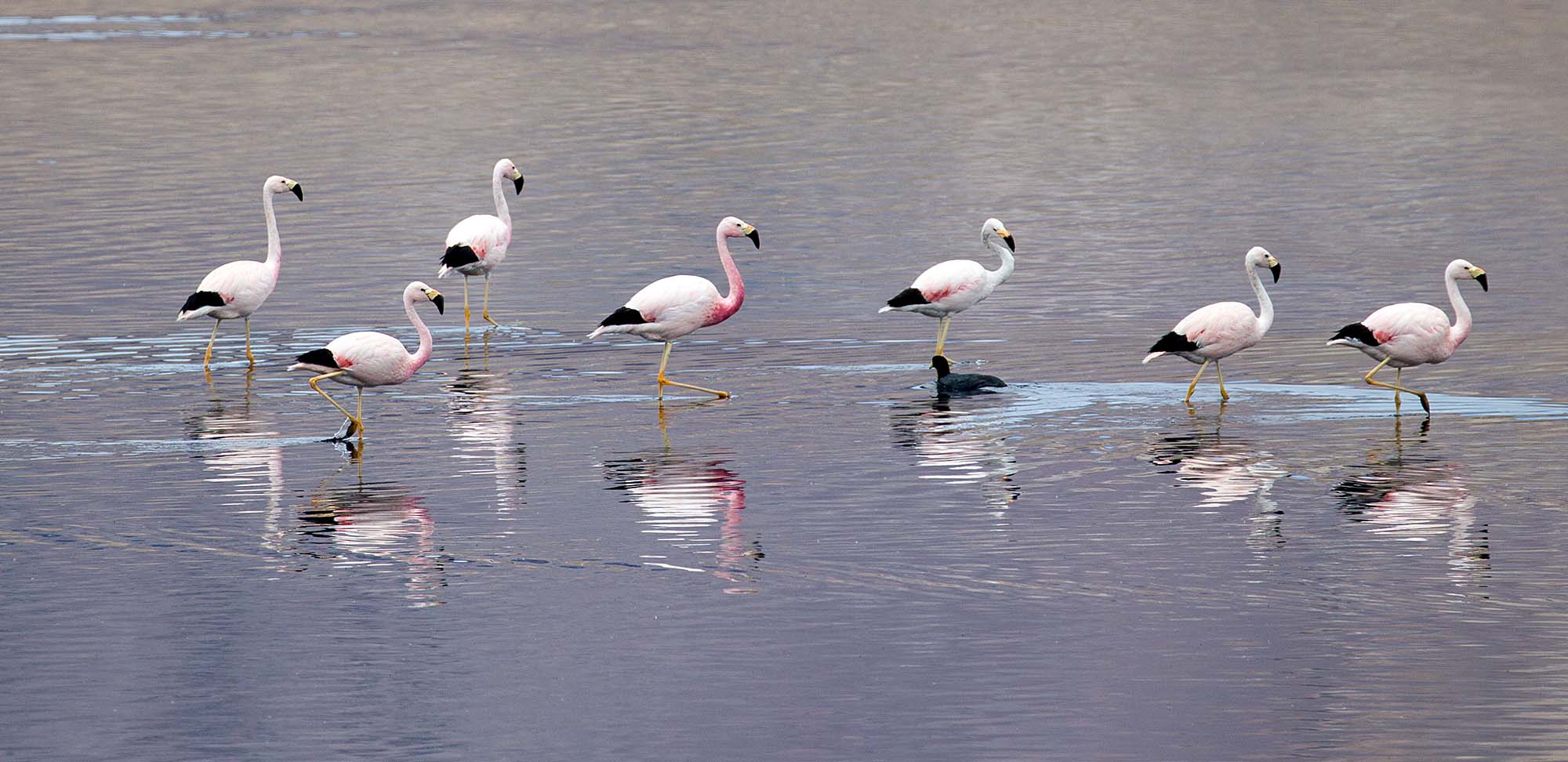
Chile: The Classic Tour
From the Atacama Desert and rich waters of the Humboldt Current to the wilds of Patagonia and the Strait of Magellan; from ancient forests of Nothofagus beech to puna grasslands below the snow-mantled peaks of the highest Andes; and from the reigning Andean Condor to the endemic Crag Chilia, Chile is a land of awesome beauty and home to an avifauna largely restricted to the southern latitudes of South America. We'll visit several of Chile's major parks and reserves as we bird each of the distinctive vegetational and altitudinal zones from the Peruvian border to the gorgeous Lake District, continuing to the tip of the continent, Tierra del Fuego. The trip includes a very birdy pelagic and two comfortable ferry crossings. (Chile is such a long country that it's hard to show detail in a small map; click on the small tour map here for a larger one where you can see more detail.)
Our tour will record approximately 270 species of birds, among these widespread southern species; but there are also many others that are little known or of very local distribution. Some include the recently rediscovered Austral Rail, Magellanic Plover, the much-wanted Diademed Sandpiper-Plover, Rufous-legged Owl, Slender-billed Parakeet, Chilean Woodstar, the incredible Magellanic Woodpecker, and the many special tapaculos--the huet-huets, Turca, and Chucao. Join us this year for a second spring--this one in Chile!
Select the KEY INFO tab or click here for our itinerary plus space requests, status, fees, limits, and guides for any departure.
Client comment "Willy is a fantastic personality and a dynamic guide. When energy, good humor, professional conduct, interest in guests, and natural history knowledge are distilled in a guide, you get a Willy Perez. Host, story-teller, and bird finder -- that is Willy. Whenever possible, I will preferentially seek tours with Willy and Field Guides. Although this is only my second tour with Willy, it will not be the last. "Chile with Willy" was a top-drawer experience. Field Guides ranks at the top compared to my experience with other organizations and companies." L.S., CHILE
Other Tours in CHILE
Itineraries • tour status • details • space requests.
- 2025 (PDF expected Feb 2025)
DEPARTURES • We have 3 departures currently scheduled through 2026, with details including limits, guides, fees, and space available listed below.
Nov 15 - Dec 5, 2024 Guided by: Willy Perez & local guide Tour Manager: Christine Boilard Tour Limit: 12 Status: Open - This tour has enough participants registered to insure its operation, but it is not yet full. Click below to book one or more spaces. Tour Fee: $10075 Deposit: $1000 REQUEST SPACE OR MORE INFO
Nov 7-27, 2025 Guided by: Willy Perez & local guide Tour Manager: Christine Boilard Tour Limit: 12 Status: Open - Space is still available on this tour, and we are accepting provisional bookings. No deposit is required until you receive the itinerary. Click below to book space. Tour Fee: Fee TBD / 2024=$10075 REQUEST SPACE OR MORE INFO
Nov 6-26, 2026 Guide: TBA Tour Manager: Christine Boilard Tour Limit: 12 Status: Open - Space is still available on this tour, and we are accepting provisional bookings. No deposit is required until you receive the itinerary. Click below to book space. Tour Fee: Fee TBD / 2024=$10075 REQUEST SPACE OR MORE INFO
Enjoy looking through the 6 most recent Field Guides triplists for this tour linked below!
- 2023 (Nov departure guided by Willy Perez)
- 2022 (Nov departure guided by Willy Perez)
- 2019 (Nov departure guided by Willy Perez)
- 2018 (Nov departure guided by Willy Perez)
- 2017 (Nov departure guided by Willy Perez & Megan Edwards Crewe)
- 2016 (Nov departure guided by Willy Perez)
Mammal and Birding Tour Chile: Pumas in Torres del Paine, Southern Patagonia
Go to: Chile Birding Tours | Mammal Tours | Birding Tours in the Neotropics | All our birding tours
Dates and Costs
11 – 18 October 2025
Price: US$6,510 / £5,311 / €6,224 per person sharing (30 % surcharge to guarantee the trip with only 4-5)
Single Supplement: US$1,240 / £1,011 / €1,185
* Please note that currency conversion is calculated in real-time, therefore is subject to slight change. Please refer back to the base price when making final payments.
11 – 18 October 2026
Price: US$7,161 / £5,841 / €6,847 per person sharing (30 % surcharge to guarantee the trip with only 4-5)
Single Supplement: US$1,364 / £1,113 / €1,304
Recommended Field Guide
(Please also read our blogs about recommended field guides for the seven continents here )
Tour Details
Duration : 8 days Group Size : 6 – 7 Tour Start : Punta Arenas, Chile Tour End : Punta Arenas, Chile
Price includes:
Meals (from dinner on day 1 until breakfast on Day 8) Accommodation Guiding fees Entrance fees All transport while on tour (private transportation in a 4WD or van) Tolls Puma tracker Boat trip to Marta and Magdalena Islands
Price excludes:
All flights Items of a personal nature, e.g. gifts Alcoholic drinks Personal insurance Boat trip to Grey Glacier (about US$ 150) Gratuities (please see our our tipping guidelines blog )
Mammal and Birding Tour Chile: Pumas in Torres del Paine, Southern Patagonia October 2025/2026
At the southern tip of Patagonia there is a vast territory crowned by the majestic Paine Massif. Its stunning granite “towers” and “horns”, surrounded by massive glaciers, turquoise lakes, and verdant forests, make it one of the most beautiful mountain landscapes on earth. This paradise is protected by the Torres del Paine National Park , “the jewel in the crown” of the Chilean national park system.
Torres del Paine is a remote refuge where the Patagonian wildlife is tame and abundant. Here we can expect to see the inquisitive Guanaco , Patagonian Fox , Patagonian Huemul (Andean deer), Large Hairy Armadillo, Andean Condor , Black-faced Ibis , and Torrent Duck , which all share the mountain landscape with the top predator of the region, Puma or mountain lion. This Chile birding and mammal tour focuses on the observation and photography of this large, elegant cat in the most spectacular area of its entire range.
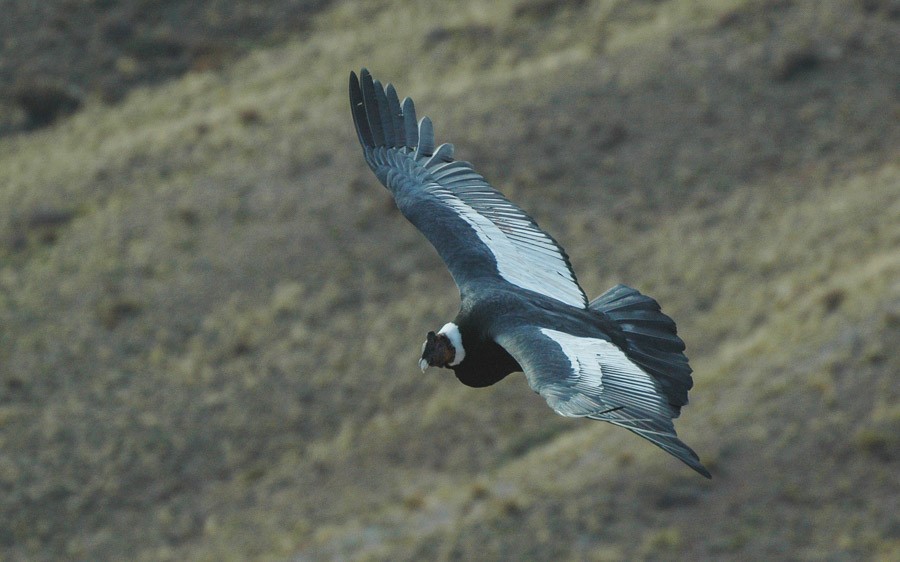
Together with the Puma and other Patagonian wildlife we will also visit a small wetland near Torres del Paine National Park, where it is possible to observe the extremely rare Austral Rail .
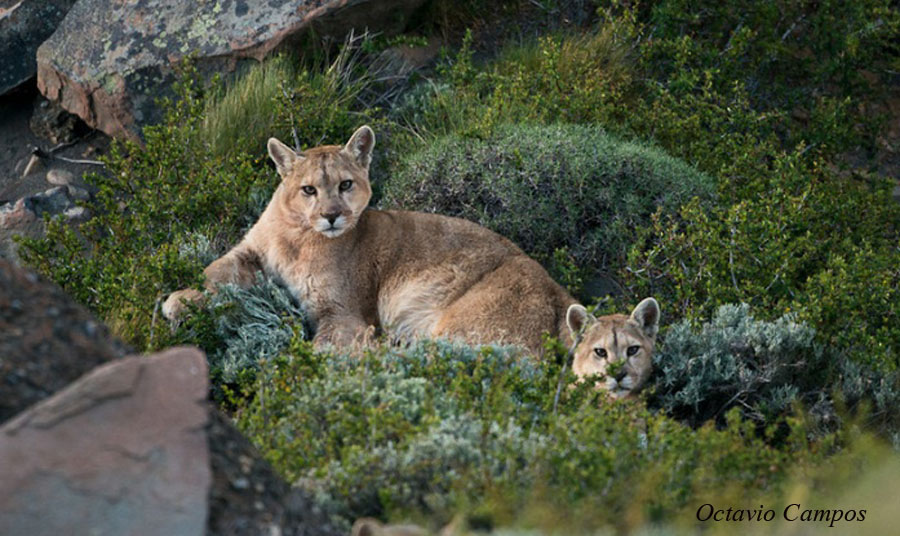
This tour is combinable with Northwest Argentina – from the foothills to puna birding tour which immediately proceeds this tour as well as Northeast Argentina – Iberá Marshlands and Iguazú National Park which
Itinerary (8 days/7 nights)
Day 1. punta arenas.
Arrival at Presidente Carlos Ibáñez International Airport in Punta Arenas with an afternoon visit to the nearby Tres Puentes Wetland to look for Chiloe Wigeon , White-tufted Grebe , Red Shoveler , Southern Lapwing , Short-billed Miner, South American Snipe , and Austral Negrito .
Overnight: Hotel Cabo de Hornos or similar, Punta Arenas
Day 2. Punta Arenas to Torres del Paine National Park
Today we drive to the majestic Torres del Paine National Park, with stops at Puerto Natales for lunch as well as birding along the bay of Last Hope Sound, where we hope to find Yellow-bridled Finch and White-throated Caracara . While crossing over the impressive Patagonian steppes we will keep a lookout for Lesser Rhea and Least Seedsnipe . After arriving at Torres del Paine National Park we will do the first outing searching for Puma .
Overnight: Hostería Pehoé , Torres del Paine
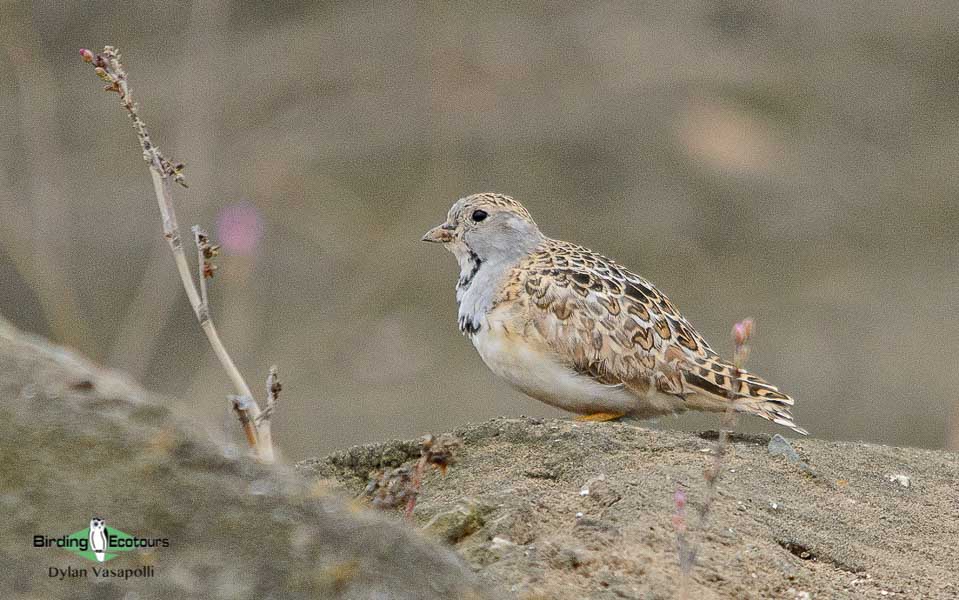
Days 3-5. Torres del Paine National Park
Three full days looking for the majestic “lord of the Andes”. After an early breakfast we will start searching for Puma in Torres del Paine National Park and the nearby Estancia Laguna Amarga, a ranch located on the eastern border of the park, which hosts large numbers of Puma .
Together with Puma we should also see large groups of Guanacos (wild relatives of the llama), Large Hairy Armadillo , Patagonian Fox , Upland Goose , Andean Condor , Yellow-bridled Finch , Black-chested Buzzard-Eagle , and many other species. We will also bird the Nothofagus (southern beeches) forests, where we hope to find the impressive Magellanic Woodpecker and Austral Parakeet .
Day 6. Torres del Paine National Park to Punta Arenas
This will be our last morning in Torres del Paine National Park. We will visit a small wetland, where we might observe and photograph the very rare Austral Rail . We will stop en route for photo opportunities at Ultimate Esperanza Bay in Puerto Natales, where we may find Black-necked Swan , Crested Duck , White-tufted and Great Grebes , Magellanic Shag , Magellanic Oystercatcher , and Dark-bellied Cinclodes .
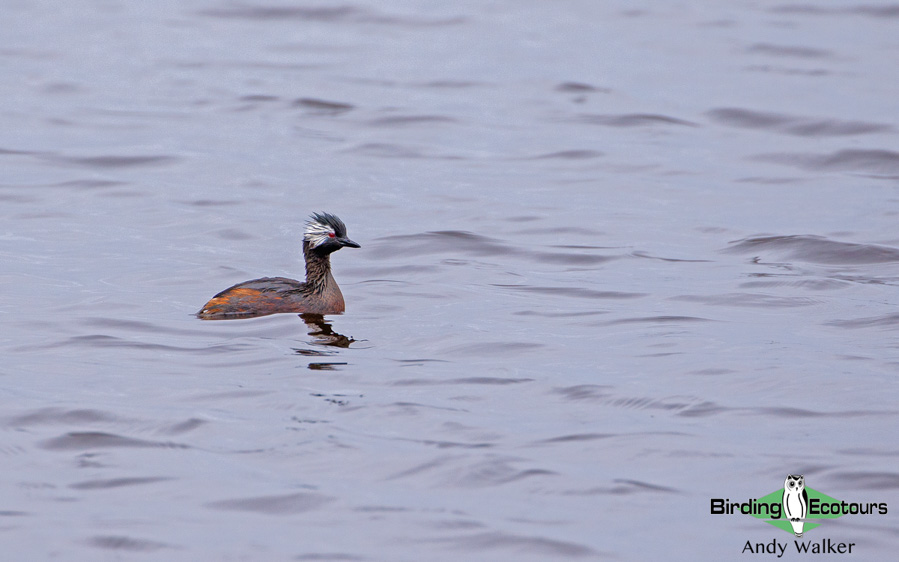
Day 7. Marta and Magdalena Islands
We will head across to Laredo Bay for the morning, where we will take a boat trip to two nearby islands, first to Magdalena Island to visit a colony of Magellanic Penguins and then circumnavigating Marta Island to view a colony of South American Sea Lions . In the afternoon we will visit San Juan Bay, where we might see Magellanic Diving Petrel , Black-browed Albatross , Chilean Skua , Kelp Gull , Magellanic Plover , and Blackish Cinclodes , among others.
Day 8. Departure
Transfer to the airport to board your departure flight, which will end an amazing eight days in Chile.
Please note that the itinerary cannot be guaranteed as it is only a rough guide and can be changed (usually slightly) due to factors such as availability of accommodation, updated information on the state of accommodation, roads, or birding sites, the discretion of the guides and other factors. In addition, we sometimes have to use a different international guide from the one advertised due to tour scheduling.
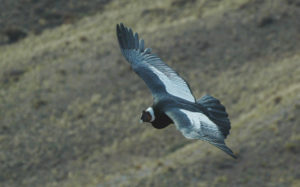
Andean Condor
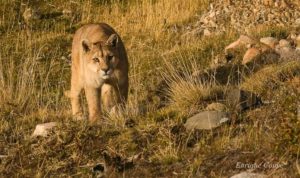
Torres del Paine
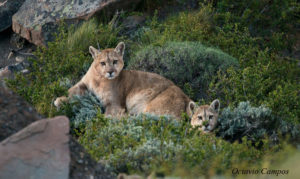
Great Grebe
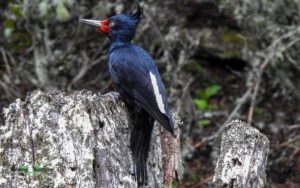
Magellanic Woodpecker
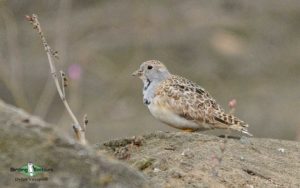
Least Seedsnipe
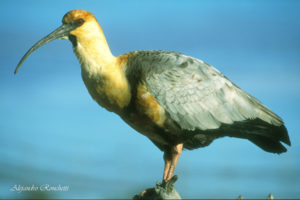
Black-faced Ibis
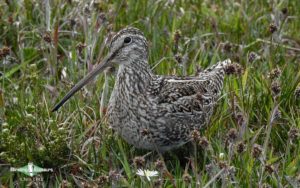
South American Snipe
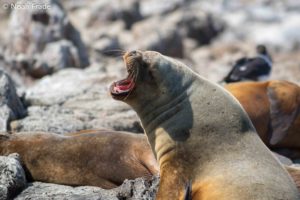
South American Sea Lion
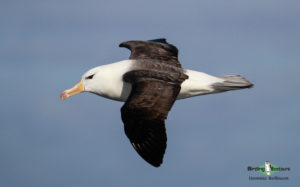
Black-browed Albatross
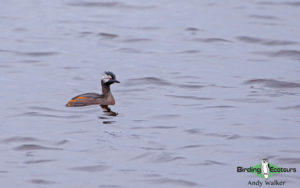
White-tufted Grebe
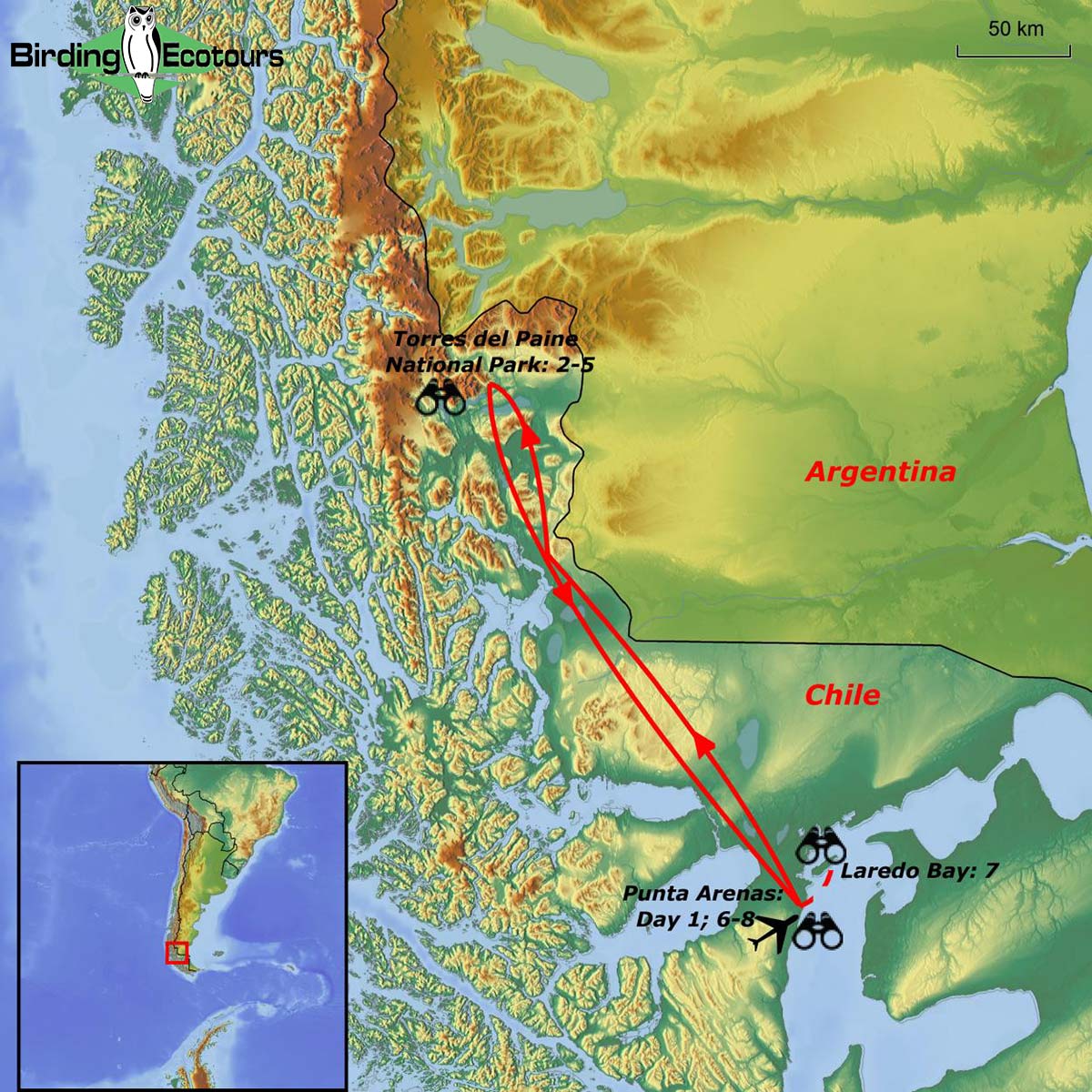
All Rights Reserved, Birding Ecotours
Join our newsletter for exclusive discounts and great birding information!
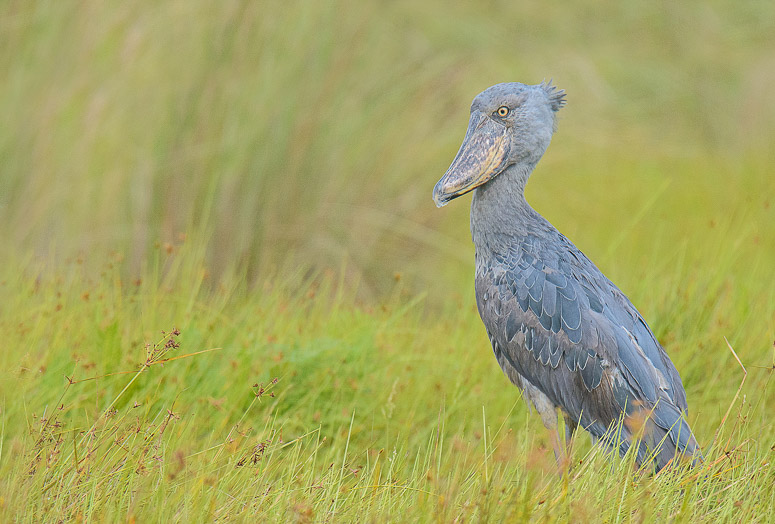
- São Tomé and Príncipe
- South Africa
- Our Birding Blog
- Contact us: (+44)1768 603 715

Chile Birding Tours
With 429 bird species, Chile offers exceptional birding with unique avifauna, featuring a wealth of sought-after species
Situated along the western edge of South America, Chile stretches like a narrow ribbon, bordered by the Pacific Ocean to the west and the towering Andes Mountains to the east. This geographically diverse country boasts an extraordinary range of landscapes, from the arid expanses of the Atacama Desert in the north to the pristine fjords and glaciers of Patagonia in the south. Chile’s unique geography, extending over 4,300 kilometers (2,670 miles), offers an unparalleled variety of ecosystems, making it a captivating destination for birding
With 429 bird species, including 14 endemics Chile offers exceptional birding with a unique avifauna, featuring a wealth of high-quality species, including sought-after endemics and regional specialties. The country’s coastlines attract impressive seabirds, waterfowl, raptors, and shorebirds. What truly sets Chile apart is its distinction as the ‘Land of the Mega-Tapaculos.’ In the Valdivian temperate rainforest, pint-sized Black-throated and Chestnut-throated Huet Huets create a spectacle, accompanied by the bold Chacao and White-throated Tapaculos, and the courageous Moustached Turcas. This diverse range of tapaculos adds a distinctive charm to Chile’s birding experience.
Chile’s breathtaking scenery is widely acclaimed as among the world’s finest. Once you’ve immersed yourself in its awe-inspiring magnificence, it becomes challenging to envision surpassing such splendor. The country hosts some of South America’s most beautiful and meticulously maintained national parks, preserving a rich array of habitats and wildlife.
Beyond its natural wonders, Chile stands as a modern, well-developed nation, ensuring that exploration is a delightful experience. From the smallest towns to the capital, Santiago, cleanliness, safety, and attractiveness prevail. The well-connected network of good roads and a sophisticated internal airline system enhances travel convenience, not to mention the delectable culinary offerings and renowned wines that add to Chile’s allure.
- Tailor-made Tours
- Scheduled Group Tours
- Endemic species
- When to visit
- What to Bring
Tailor-made info Chile
At Sustainable Birding, we don’t offer ready-made, off-the-shelf birding tours. Our approach is deeply personalised—we meticulously craft each of our tours in Chile from scratch, ensuring every detail aligns with your unique preferences. From the Andes to the stunning Atacama Desert, our team of seasoned birding experts use our comprehensive knowledge to tailor your birding holiday, guaranteeing an experience perfectly attuned to your specific requirements.
All our birding tours in Chile are expertly guided by our passionate, knowledgeable and experienced Chilean tour leaders. They are some of the best guides on the planet! So, give us a call or drop us an email and let’s talk Chile!
Reasons to go on a Tailor-made Birding Tour
• Select the exact dates that suit your schedule. • Choose the ideal time of year for your birding adventure. • Travel alongside your preferred companions—be it family, friends, or fellow birders. • Set your pace—whether fast or brisk. • Customise within your personal budget, from luxurious to budget accommodations or a mix. • Craft a tour that matches your specific interests—whether intense birding, leisurely exploration, photography, culture, music, wine, botany, butterflies, herpetology, geology, diving, hiking, and beyond. • Our team is here to cater to your interests and ensure a fulfilling birding holiday.
Scheduled Group Chile Birding Tours
Explore our selection of Scheduled Group Birding Tours in Brazil. These groups tours have been designed to fit different birding preference and time restraints. Typically, our group tours are more affordable, and allow people to meet up and make lifelong memories with fellow birders. All our group tours are small and come with an expert Tour Leader, having groups no bigger than 6 individuals, so you still get that intimate feeling and the full attention of the Tour Leader.
Please refer to our Birding Calendar for tour schedules, dates, and fixed prices.
Endemic species: 14
• Chilean Tinamou • Hooded Grebe • Juan Fernandez Firecrown • Chilean Woodstar • Masatierra Petrel • Stejneger’s Petrel • Juan Fernandez Petrel • Pink-footed Shearwater • Slender-billed Parakeet • Moustached Turca • White-throated Tapaculo • Seaside Cinclodes • Masafuera Rayadito • Juan Fernandez Tit-tyrant
Best time of year to visit:
Generally, the austral spring and summer months, from October to March, are considered the best time for birding. During this period, migratory species arrive, and resident birds engage in breeding activities, making it an ideal time for good sightings.
In the central and southern regions, such as Santiago and the Valdivian temperate rainforest, the austral spring (October to November) is particularly rewarding as it coincides with the breeding season. The austral summer (December to February) remains favorable, offering pleasant weather and optimal birding conditions.
In the northern desert regions, such as the Atacama Desert, birding can be enjoyable year-round due to the arid climate. However, migratory species are more commonly observed during the austral spring and summer.
Weather & climate
Chile, with its vast geographical expanse, encompasses diverse climates across its length. In the northern regions, such as the Atacama Desert, arid and desert conditions prevail. Here, temperatures can be hot during the day and cooler at night, and rainfall is minimal, contributing to the unique landscapes of the desert.
Moving towards the central regions, including Santiago, a Mediterranean climate takes hold. Summers are warm and dry, while winters are cooler and bring more precipitation. This central zone, with its distinct seasons, provides an attractive setting for birding, especially during the austral spring and summer months from October to March.
As one ventures southward into Chile’s southern regions, including areas like the Valdivian temperate rainforest, a cool temperate climate prevails. The temperatures remain relatively mild, and the region experiences more consistent rainfall. The lush landscapes of the temperate rainforest contribute to the overall biodiversity of Chile, making it a captivating destination for bird enthusiasts.
What to bring
Dressing in layers is advisable to adapt to varying climates encountered during a one of our birding tours. A lightweight waterproof jacket is a must-have, offering protection against unexpected weather changes. Comfortable, moisture-wicking clothing is essential for long hours spent outdoors, ensuring you stay comfortable.
For traversing diverse terrains, sturdy waterproof hiking boots are essential. Whether exploring the arid landscapes of the Atacama Desert or the lush trails of the Valdivian temperate rainforest, reliable footwear will enhance your mobility and overall enjoyment of the birding tour.
Equipment such as high-quality binoculars tailored for birdwatching is essential and if you have a good working camera and lens, then please bring it with you! A comprehensive field guide specific to the country’s birds, such as Birds of Chile (Helm Field Guides) is recommended.
*Remember that when you book a Chile birding tour with us for 14 days, we will send you a new complementary field guide!
The Sustainable Birding Company is a subsidiary of Far and Wild Travel, a tailor-made tour company based in Cumbria, UK. Far and Wild Travel offer sustainable, luxury, tailor-made tour itineraries throughout Africa and around the world.
UK: +44 1768 603 715


Birding Northern Chile |
The impressive bird life of the atacama & the altiplano.
Birding Northern Chile tour. Birdwatching trip aimed to discover the birds and wildlife specialties of the Atacama Desert coastal areas, the oasis valleys of northern Chile, and the High Andean Plateau or Altiplano. This trip includes a comprehensive visit to Putre’s surroundings and Lauca National Park to explore the wealth of wildlife found on its puna grasslands, Andean lakes, bogs and scrubby ravines. An optional visit to Surire salt flat, one of the top wildlife spots in the whole High-Andean desert, is available upon request.
Our journey to the north of Chile will take us to the fringes of world’s most driest desert, the inhospitable Atacama, on the border with southern Peru. Our base locations will be Arica, Chile’s northernmost city, and the town of Putre. This unique and scenic area is home to highly diverse species such as Puna (or James’s) Flamingo, Tamarugo Conebill and Diademed Sandpiper-Plover. From the huge, flightless Giant Coot to the tiny Chilean Woodstar, Chile’s smallest bird and one of the most threatened. We will explore the Azapa, Lluta and Chaca valleys around Arica, drive to Putre, situated just below the Altiplano at 3,500m (10,500ft) above sea level where we’ll look for pre-puna shrub specialties before climbing up to the high Andean Plateau of Lauca National Park. There is an optional trip to Surire National Reserve, one of the most impressive salt pans of the whole Chilean altiplano (highly recommended).
Interested in a trip option with a broader focus on wildlife and visiting this same region, take a look to our Northern Chile Wildlife Adventure . birding northern chile tour
2024 Departures |
October 20 to 24, 2025 departures |, october 11 to 15, 2026 departures |, october 10 to 14, 5-day trip from arica, chile, min. 3 / max. 6 participants, click for space request |, lauca national park, chile © david couve, far south expeditions, itinerary in brief |.
Day 1 • Morning flight to Arica – Drive to Putre – Putre (2 nights)
Day 2 • Parinacota – Lauca National Park
Day 3 • Azapa & Lluta valleys – Arica (2 nights)
Day 4 • Pelagic trip off Arica – Chaca and Camarones valleys
Day 5 • Flight to Santiago – End of the trip
Trip Highlights |
• Comprehensive visit to Northern Chile’s birding hotspots: Arica, Putre, Lauca National Park and Las Vicuñas Nature Reserve.
• A great set of Andean specialties such as Chilean, Andean and Puna flamingos, tinamous, seedsnipes, ground-tyrants, canasteros, Sierra finches and the stunning Diademed Sandpiper-Plover.
• Spectacular Andean species such as Lesser Rhea, Puna Tinamou, Giant Coot, Andean Avocet, Andean Goose, Puna Teal, Andean Flicker and Puna Ibis.
• Interesting mammals including Guanaco, Vicuña, Northern Huemul Deer and Vizcacha.
• Lauca National Park, a UNESCO World Biosphere Reserve, and one of Chile’s most scenic wildlife reserves.
• Pelagic trip off Arica with great chances of Markham’s, Wedge-rumped and even Ringed Storm-petrels. birding northern chile tour

Trip Gallery |
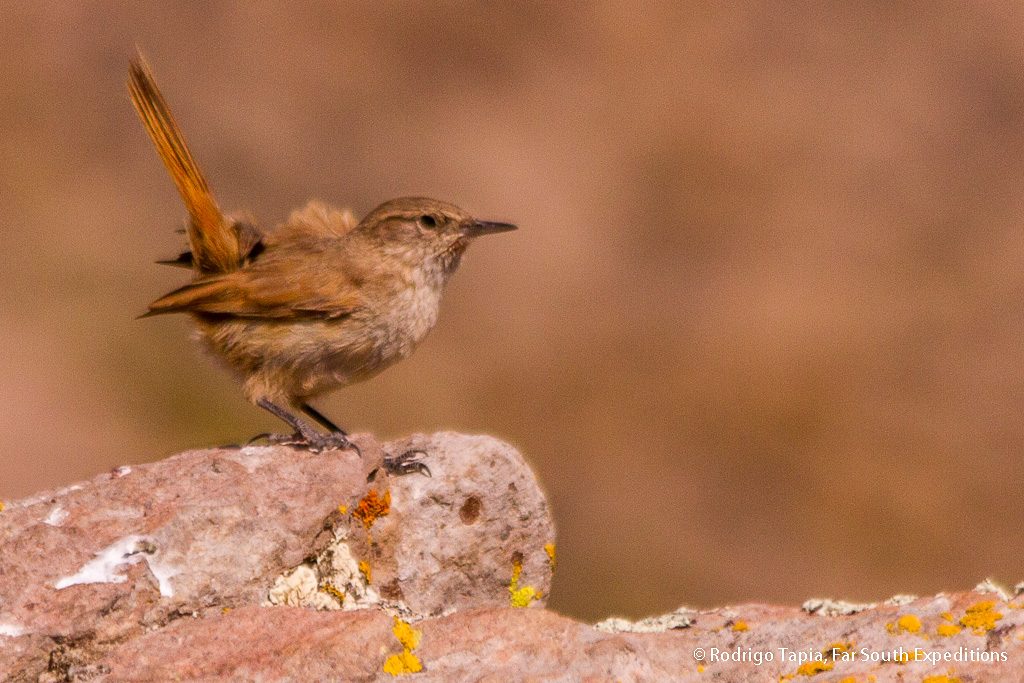
Detailed Itinerary and Activities |
Day 1 • flight to arica – drive to putre.
Birding Chile tours. Our Chile birding adventure begins today! You will be met by your tour leader at Santiago airport for a morning flight ( c. 2.5 hours) to Arica, at 18°S, Chile’s northernmost city. Right after, we will leave the coast and head towards the imposing slopes of the Andes, but first we will search around the lowland cultivated valleys for the intriguing Peruvian Thick-knee; Andean Swifts and Grayish Miners are possible species just before we reach the hyper-arid desert stretch, as we drive up to the highlands and into our destination, the mountain village of Putre. This picturesque Andean settlement is located at 3,400 meters above sea level (11,483 ft.) and will be our base for the following two nights. The pre-puna semi-arid bushy slopes are very rich in species; Sparkling Violetear and Andean Hillstar, Creamy-breasted and Canyon Canasteros, Golden-billed Saltator and Blue-and-yellow Tanager, Hooded and Thick-billed Siskins are among the range of exciting birds that occur here. The gardens, cultivated terraces, eucalyptus groves and rocky walls surrounding Putre are the perfect habitat for Aplomado Falcon, Mountain Parakeet, Bare-faced Ground Dove, Spot-winged Pigeon, White-throated, Plain-breasted and Straight-billed Earthcreepers, White-winged Cinclodes, Black-throated Flowerpiercer, Chiguanco Thrush, White-browed Chat-Tyrant, Band-tailed Seedeater and Black-hooded, Mourning and Ash-breasted Sierra Finches.
Overnight Hotel Q’Antati or similar, Putre (Lunch, Dinner)(Guide)
The Altiplano, Puna or High Andean Plateau above 4,000m, is truly a mecca for wildlife and we will have the whole day to discover its many secrets and stunning landscapes. Established to protect the highest lake in the world (and World Biosphere Reserve), Lauca National Park supports a great diversity of Andean fauna. The high-altitude bogs, locally known as bofedales , hold a remarkable number of species (all endemic to this eco-region), specialties such as all three Chilean species of Flamingo (Chilean, Andean and Puna), the delicate Andean Avocet, Giant and Andean coots, Puna Ibis, Andean Goose, Puna Teal, Rufous-bellied and Grey-breasted Seedsnipes, Andean Avocet, Andean Lapwing, Puna Plover, and the exquisite Diademed Sandpiper-Plover. The surrounding barren plains are a very good habitat for both Puna Rhea and Puna Tinamou. An impressive cast indeed. At 4,500m / 14,763ft, Lake Chungara area will be the highest spot during our entire trip. Surrounded by imposing volcanoes, this is a magnificent place and probably one of the most beautiful views that we will have during our whole Chilean Birding Adventure. Among the species we can find here are Andean Gull, Andean Flicker, Cordilleran Canastero, Puna and White-fronted Ground Tyrants, Andean Negrito, White-winged Diuca Finch and Black Siskin.
Overnight Hotel Q’Antati or similar, Putre (Breakfast, Lunch, Dinner)(Guide)
Day 3 • Azapa & Lluta valleys – Arica
In the morning we drive back to Arica. Today we will investigate the bird-rich valleys of Azapa and Chaca, the haunt of specialties such as Croaking Ground Dove, Chilean Woodstar, Peruvian Sheartail, Oasis Hummingbird, Tamarugo and Cinereous Conebills, Bran-colored and Vermillion Flycatchers, Peruvian Meadowlark and the odd-looking Slender-billed Finch. In the afternoon we will comb the productive estuary of the Lluta River in order to study the various coots, egrets, shorebirds, terns and gulls gathered here to roost, usually in large numbers.
Overnight Hotel Novotel or similar, Arica (Breakfast, Lunch, Dinner)(Guide)
Early morning we will take a boat trip off Arica to continue our search for the endemic seabirds of the Humboldt Current. We will look for Peruvian Diving Petrel and we may also find Elliot’s and Markham’s Storm Petrels. The delightful Inca Tern will be a common sight around the harbor plus Common and South American Terns. The endangered and local Peruvian Tern is another potential species for the morning. Along the rocky coast south of Arica we expect to see a great array of seabirds including Peruvian Pelican, Peruvian Booby, Guanay and Red-legged Cormorants, the stunning Inca Tern plus Belcher’s and Grey Gulls. Other birds include Little Blue Heron, Willet, Whimbrel, Ruddy Turnstone, Surfbird, Franklin’s Gull and Elegant Tern. We will extend our journey southwards along the coast to the Camarones Gorge where we expect to see Pied-crested Tit-Tyrant and Yellowish Pipit.
Day 5 • Flight to Santiago
We will catch a morning flight to Santiago to continue with our exploration of central Chile and its endemic and specialties. (B)(Guide) birding northern chile tour
Dates & Rates |
Scheduled departures.
The above price is per person in US Dollars. All payments are in US Dollars. Single supplement will be added if single accommodations are requested.
Custom Departures
You choose the date. Available year-round. Daily departures from Santiago de Chile or Arica, Chile. Ask for rates.
What the trip includes/excludes
The trip price includes : All accommodations, meals and guide services as stated in the itinerary, private ground transportation during the tour, and park entrance fees. The trip price excludes : Domestic flights (Santiago – Arica – Santiago or other route), tipping, travel insurance, entrance tax to Chile, excess baggage charges, private excursions, à la carte dishes, snacks, drinks, laundry, telephone calls and anything else of a purely personal nature.
Do you want us to arrange your flights from Santiago to Arica?
Domestic flights Santiago – Arica – Santiago (from US$ 200-300 per person). Duration of the flight: 2-3 hours.
Tour Leaders |
Jorge valenzuela.
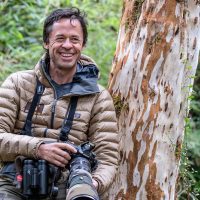
A viticulturist by profession, Jorge was attracted to birds at an early age while frequenting the countryside of central Chile during holidays, a fact that made him pick a career related to the outdoors such as agriculture, which enabled him to have an even deeper contact with nature. Born in Viña del Mar, he has lived in Santiago and other places in central Chile (O’Higgins and Maule areas), where the best red and white wines of Chile are produced. From watching birds in the wild, by 1993 he was motivated enough to become a member of UNORCH, the Chilean Ornithologists Association, a step that further helped him into deepening his knowledge on the birds of Chile, and from birdwatching he gradually moved into self-taught outdoors photography, a craft he learned through many hours in the field, reading and seeking advice from experts.
Some four years ago he started devoting more and more hours out in the field to learn bird and wildlife photography first-hand, especially in the central Chilean Andes mountains. Today the images he has captured during his travels across Chile stand out as testimonials of his journeys, which started as a schoolboy in 1992, and continue to this day, leading him to explore new places such as southern Chile and Chilean Patagonia. As part of the Far South Expeditions team, he guides some of our birding and photo tours in Chile & Patagonia and curates the photo galleries in our website. Also contributes to our wildlife blog with his photography and articles. In his spare time Jorge enjoys mountaineering, cycling and fly-fishing, all outdoors and nature-related sports.
Rodrigo Tapia

Rodrigo Tapia started his long-time love relationship with birds when he became an avid birder by the age of 10, and has been observing, studying and learning about them for more than 30 years now, first by birding in many different environments from the seaside to the Andes mountains around his home patch, acquiring in the process a good deal of field experience with virtually all the birds of central Chile including most chilean endemics, and later expanding his voyages to the rest of the country. This early passion naturally evolved into his career and led him into studying Biology at Universidad Católica de Valparaíso and further studying with Cornell Lab of Ornithology . He has explored Chile’s whole length from the northern Altiplano to Cape Horn while conducting ornithological research and guiding groups of birders since 1989. He studied the birds in the wetlands of the Aconcagua river and Mantagua for three years, gathering experience with shorebirds, plovers, waders and coastal seabirds. Rodrigo travelled to Antarctica for the first time in 1991 as part of a research team conducting studies on antarctic penguins, and later worked for eight seasons in the White Continent as an expedition leader, lecturer and zodiac driver on board a couple of vessels. These years of sailing across the Drake Passage, together with the experience gathered in pelagic birding off his hometown of Valparaíso in the Pacific coast of central Chile gave him hundreds of hours with albatrosses, petrels and other seabirds, a group of birds which has always captivated him.
Claudio F. Vidal
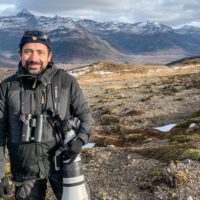
Claudio has been exploring and birding since the age of 12 and currently leads birding / nature tours and photo safaris throughout Patagonia, Chile and South America. He is one of the two founders and original driving forces behind the far South Expeditions concept and company. Claudio has a particular interest in the seabirds and marine mammals occurring in the Humboldt Current, Patagonia and Antarctica. Botany is also one of his greatest passions, leading him to devote to the photographic documentation of wildflowers of desert and Mediterranean regions of the world, of which he possesses a vast archive. Claudio is now finishing the writing of a Field Guide to the Birds of Chile together with a team of accomplished field ornithologists, and is co-author of more than 20 books, including the acclaimed Birds of Patagonia, Tierra del Fuego and Antarctic Peninsula . He is actively involved in several ecotourism projects in Chile and is founding partner of Far South Expeditions since 1997. He lives in Punta Arenas.
Check out other of our birding adventures in Chile |
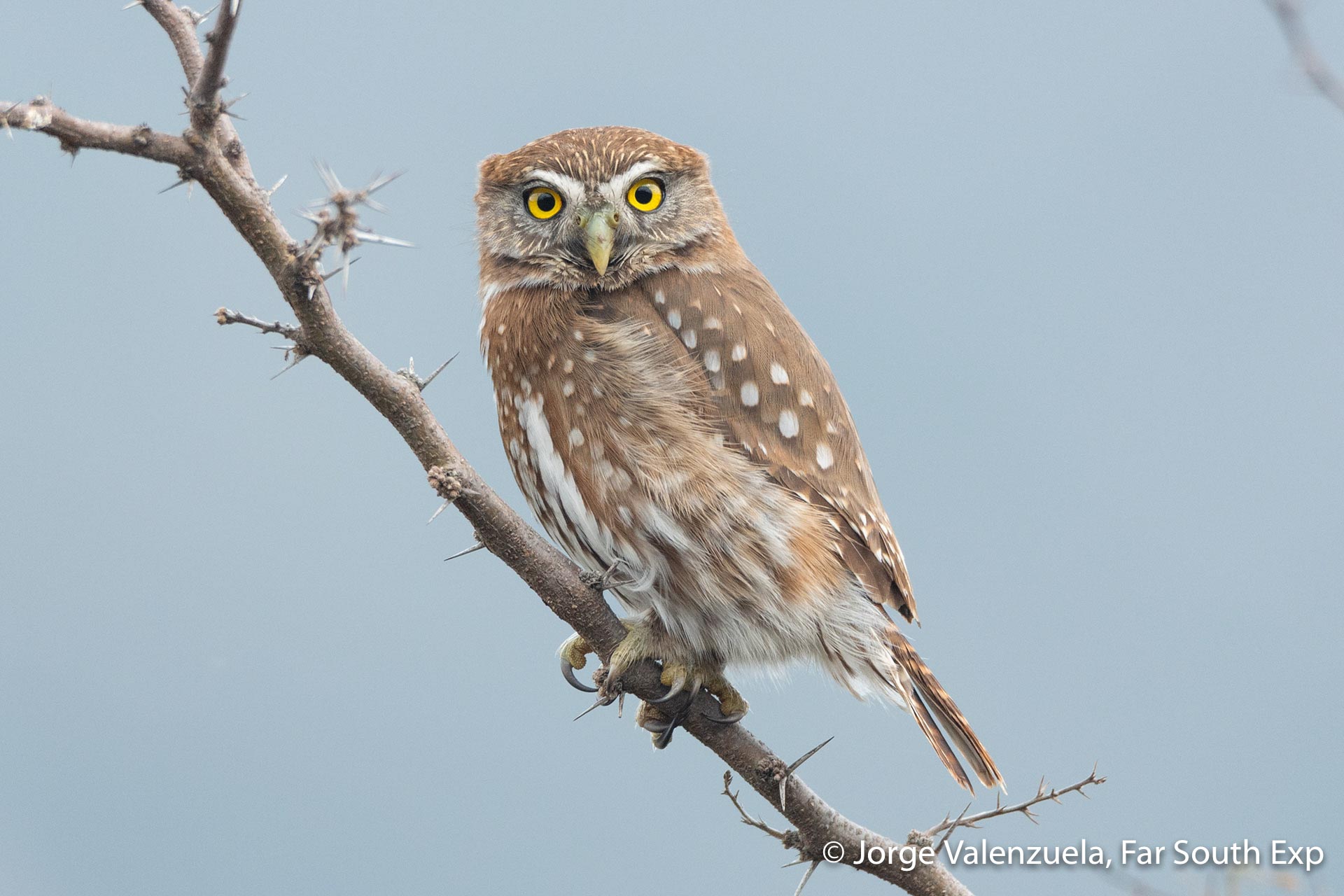
Tour Registration |
To book this tour, please fill in our online registration form . We will process your booking and will send you a note with space confirmation and a transfer invoice with payment instructions within 24 hours. The transfer amount is 500 USD per person. Full payment of the tour fee is due 90 days prior to tour departure.
Note: Inquiries received on Saturdays, Sundays and Holidays will be replied to during the following working day.
Cancellation Policy
Notice of cancellation can only be accepted in writing from the person who signed the booking form and takes effect on the day such noticed is received by us.
Refunds are made according to the following schedule:
• If cancellation is made 120 days or more before departure date, the transfer amount minus 200 USD is refundable.
• If cancellation is made between 120 and 60 days before departure, the transfer is not refundable, but any payments covering the balance of the fee will be refunded.
• If cancellation is made less than 60 days before departure date, no refund is available.
This policy and fee schedule also applies to pre-trip and post trip extensions, as well as any transfers from one tour to another. We strongly recommend the purchase of trip cancellation insurance to protect yourself.
© 2024 • www.farsouthexp.com • Far South Expeditions
Type and press Enter to search
Albatross Birding and Photography in Chile

The Best of Birding around Santiago
Santiago is a modern, cosmopolitan city and the main starting point to travel throughout Chile. Located in the central valley, on the east it is flanked by the imposing high Andes and to the west by the coastal mountain range. The natural areas surrounding Santiago are considered biodiversity hotspots, home to several of Chile’s endemic birds and many Mediterranean habitat specialists. This multi-day tour combines the best of birding around Santiago.
Only 120 kilometers away we reach the Pacific Ocean, with its vibrant coastal wetlands. Here we can also venture into the rich Humboldt Current , where pelagic birding is truly superb.
This birding trip is a comprehensive itinerary of all habitats and species to be seen close to Santiago. In four days we will cover varied high Andean landscapes and its birds, enjoy coastal wetlands and sail out into the Pacific to marvel at scores of large Albatrosses.
If you are time limited, we can accommodate any combination of the days listed ( Highlands , The Yeso Valley , Pacific Coast and Valparaiso Pelagic ).
- Transport: SUV for 1-3 people, minivan for 4-6 people
- Pick-up/drop-off at your hotel in Santiago
- English speaking guide with birding equipment
- Snacks (fruit, nuts, cereal bars, water)
- Park entrance fees
- eBird checklists for the day’s stops
ITINERARY SUMMARY:
Day 1 – Highlands above Santiago – The endemic quest!
Day 2 – The Yeso Valley – Diademed Sandpiper Plover
Day 3 – Birding The Pacific Coast
Day 4 – Pelagic Trip Off Valparaíso
Private trips can be organized on any day from September to May.
- Seven of Chile’s endemics
- Andean Condors soaring at a short distance
- Incredible mountain landscapes
- Relaxed pace; short easy walks. On days at high elevation we will maintain good hydration and slow pace so everyone feels fit.
Ease of Birding
- Most species show easily, with some trickier skulking species for which playback is used.
In a single day out of Santiago it’s possible to see all the endemics of central Chile. This trip aims to see all 6 of the central Chile endemics: Chilean Tinamou , Crag Chilia , Dusky-tailed Canastero , Moustached Turca , White-throated Tapaculo , and Dusky Tapaculo ; as well as the near-endemic Chilean Mockingbird. During the day we will be exploring the Mediterranean scrub of the foothills and alpine areas of the Andes Mountains near Santiago, doing various stops at different altitudes.
Of course, our birding will not be limited to these endemics, and we will encounter many other wonderful birds like: Striped Woodpecker, Chilean Flicker, Austral Pygmy-owl, Giant Hummingbird , White-sided Hillstar , Creamy-rumped Miner , Black-fronted Ground-Tyrant, Greater Yellow-finch, Magellanic Tapaculo, Scale-throated Earthcreeper, Andean Condor , Mountain Caracara, among others.
At our picnic spot, we usually have Andean Condor soaring above, and Rufous-banded Miner, Gray-hooded Sierra-Finch and Greater Yellow-finch at close distances looking for some leftover crumbs from our lunch.
This trip is a great introduction to birds in Chile, from common widespread species to central Chile specialties. Climbing to higher elevations that are easily accessible from Santiago also offers stunning mountain landscapes.
The Yeso Valley is well known for being one of the most accessible places to see the sought-after Diademed Sandpiper-Plover . This beautiful and enigmatic mountain shorebird breeds in the high elevation bogs of the valley and will be our main target for the day. Members of Albatross are proud to have led a research project on the species for many years, and thus have a great track record for finding it.
In addition to the Sandpiper-Plover there are many other interesting species we will be stopping to look for on our way to higher elevations. Among them are the endemics Crag Chilia and Moustached Turca ; Torrent Ducks in fast-moving rivers, and many Andean specialties like White-sided Hillstar, Andean Goose, Scale-throated Earthcreeper, Black-fronted and White-browed Ground-Tyrants, Greater Yellow-finch, Yellow-rumped Siskin, Andean Condors and Mountain Caracara. Reaching higher elevations we will also be able to see some more rare and localized species like Creamy-rumped Miner and Grey-breasted Seedsnipe .
The scenery here is some of the most beautiful and dramatic in Central Chile. High mountains, turquoise lakes, hanging glaciers and white-water rivers combine to make a magnificent spectacle.
Leaving early from Santiago we will head towards the coastal city of San Antonio. Just south of the city we will visit a recently created reserve on the Maipo river estuary. This reserve protects one of the most important wetlands in central Chile, where we’ll be able to enjoy large groups of gulls, Black Skimmers, terns, pelicans and shorebirds.
The reedbeds at the reserve entrance are a great place to see the stunning, but skulking, Many-colored Rush-Tyrant and Wren-like Rushbird, as well as Yellow-winged Blackbird and Sedge Wren.
On the beach, seawatching can add sightings of Red-legged and Guanay Cormorants, Peruvian Boobies, and even Chilean Skuas.
After scanning the masses of migrant shorebirds on the mudflats in search of potential rarities we will pay some more attention to the passerines and look for the rare Ticking Doradito (a recent split from the Warbling Doradito), Spectacled Tyrant , Correndera Pipit and the Chilean endemics Dusky Tapaculo and Dusky-tailed Canastero .
Driving north along the coast we will have lunch at a seaside restaurant on the rocky shoreline. This location is also a great spot to find another Chilean endemic, the Seaside Cinclodes .
In the afternoon we will visit more protected wetlands, looking for Spot-flanked Gallinule, Black-necked and Coscoroba Swan, Plumbeous Rail, Black-headed Duck and maybe even the secretive Stripe-backed Bittern .
We will also stop near a Peruvian Pelican colony where a few Humboldt Penguins are also breeding.
Murphy said “I now belong to the higher cult of mortals for I have seen the albatross!”
If you want to belong to this cult, and enjoy one of the best pelagic experiences in the world, then you have to go on a pelagic trip on the Humboldt Current!
Seabirds such as albatrosses, petrels and shearwaters are species with a unique biology. In their wandering through the seas of the world they only touch firm ground for breeding. Thus, to see them up close it is necessary to embark on offshore pelagic trips to reach their feeding areas.
Chile has more than 4,000 kilometers of coastline and is considered as one of the best places in the world to do pelagic trips. The Humboldt Current was named after its ‘discoverer’, the German naturalist Alexander von Humboldt; a cold and low-salinity ocean current emerging from the seabed off the coast of southern Chile and moving northward dragging nutrients even as far up as Ecuador, creating one of the world’s richest marine ecosystems.
This huge rise of nutrients notably favors the observation of marine fauna. Exceptional trips have produced roughly 60(!) species of seabirds. With over half a dozen species of albatrosses, and multiple species of petrels, shearwaters, terns, diving-petrels, cormorants, gulls and terns.
The abundance of different species vary throughout the year, depending on each species’ reproductive strategy. Among the most commonly seen species off the coast of Valparaiso are: Black-browed , Salvin’s and Royal (Northern and Southern) Albatrosses, Northern Giant-Petrel , Mottled (Cape), Juan Fernandez, White-Chinned and Westland Petrels, Sooty and Pink-Footed Shearwaters, Peruvian Diving Petrel, Inca Tern , Wilson’s (Fuegian) Storm-Petrel, Humboldt and Magellanic Penguins, Peruvian Booby, Guanay Cormorant and Peruvian Pelican. Among the more uncommon species we may see, are Masatierra Petrel, Chatham and Buller’s Albatross, and Southern Fulmar.
Our pelagic trips last roughly 6 hours and a shared boat is scheduled for the second Saturday of every month.

Cape Cod a popular rest point for shorebirds on long migrations. 'Lesser-known tourists.'

WEST BARNSTABLE — Whenever he gets a chance, one of Peter Crosson's favorite things to do is to go to work, counting shorebirds .
"Any excuse to go birding ," he said as his truck bounced, soft-tired, over swales of deep sand between Sandy Neck Beach and the Great Marshes on Aug. 6.
Birding is a passion of his. The "work" comes in when he ventures out to conduct surveys of shorebirds as a volunteer for Manomet Conservation Sciences , a nonprofit that uses science and collaboration to improve the health of flyways, coastal ecosystems, and working lands and seas.
This month Crosson was among dozens of volunteers contributing to Manomet's second annual Massachusetts Shorebird Blitz , a nine-day survey that ended Sunday.
'Thousands of birds in one roost'
Sandy Neck hosts some of the highest numbers of shorebirds in the state.
During last year's inaugural blitz, Crosson estimated about 5,800 shorebirds were present at Sandy Neck on the day he conducted his survey — about 8% of the total estimated 73,088 shorebirds, comprising 29 species, that were observed at 115 Massachusetts coastal sites.
Crosson on Aug. 6 gave a tour of part of the route he follows when he's in the field. Joining him was Manomet staff member Lisa Schibley, the North American coordinator for the International Shorebird Survey .
Crosson’s frequent birding excursions on Sandy Neck have taught him where the shorebirds tend to feed and where they tend to settle down to roost, during what time of day and during which tides. Further down Sandy Neck, near the entrance to Barnstable Harbor, “some of the roosts get massive,” he said.
“You'll see thousands of birds in one roost. And often, especially out at the tip, you'll see 10 to 12 different species together in one roost.”
The 'art' of counting birds
The birds can be “very flighty” when there are small disturbances, taking flight in unison — a remarkable sight to see, he said, though it can cause issues when it comes to doing a count.
"There's nothing more fun than counting like three quarters of this giant roost and then having a peregrine buzz them and they all explode in every direction."
Crosson admitted he finds counting challenging.
“I mean, anybody can count, but it's allowing yourself to stay focused and count intelligently, thinking more in terms of looking at a small group of maybe five or 10, and counting those in clusters,” he said. “It's a real art. I tend to be more like trying to look for the rarity in there, and I have to remind myself ‘I'm here to count, I'm not here to look for the rarity.’”
Schibley agreed it’s easy to slip into that treasure-hunting mode.
When it comes to counting birds for the surveys, like the blitz, Schibley said the focus is on estimation and calculating percentages of different species of birds, rather than getting exact counts.
“What we're interested in is the trend. So, if one person is counting these birds in this spot the same way year after year after year, that's going to tell us the trend, even if we don't have the exact number of birds,” she said.
Volunteers matter
Among the Manomet staff, Crosson is thought of as a “super volunteer” because with Sandy Neck, which is near his home, “he’s taken on this very difficult, complex space and has been sending us great data for a long time,” Schibley said.
Crosson's work, and that of other volunteers on the Cape and elsewhere, is invaluable to Manomet, she said. Sometimes their work reveals locations are more important for shorebirds that scientists thought. Chapin Beach in Dennis, which is regularly surveyed by Mary Jo “MJ” Foti , another volunteer, is a case in point. Foti's work revealed that the beach “is one of the most important feeding areas on Cape Cod for shorebirds," Schibley said.
"That’s something I don’t think most shorebird scientists understood."
Why is it important to count migrating shorebirds?
Cape Cod, said Liana DiNunzio, one of Manomet's shorebird biologists, supports upwards of 100,000 migrating shorebirds a year.
Unlike the piping plovers and American oystercatchers that nest on the beaches here, many of the shorebird species that visit Cape Cod during migration in spring and fall breed farther north, some even as far as the Arctic, DiNunzio said.
"They use Cape Cod as a place to rest and refuel — known as a staging area — during their long journeys between their breeding grounds and non-breeding grounds in the south," she said. "Some birds fly as far as 9,000 miles between the Arctic and Chile twice a year to complete their annual cycles."
These birds must have enough food and safe places to rest at their staging areas "so they can survive their long migrations and have successful breeding seasons."
"This is the lesser-known group of 'tourists' that visit the region," she said.
The goal of the Massachusetts shorebird blitz in particular "is to get a minimum estimate of the number of shorebirds using our coastline during peak fall migration" and to identify significant stopover locations all along the Massachusetts coastline.
Data collected during surveys, she explained, will guide future research and conservation in the region.
“The blitz is also an opportunity to bring awareness to shorebirds and their amazing migrations. This is particularly important because many of the shorebird species that visit here are in decline,” DiNunzio said. “The success of shorebirds reflects the health and well-being of the coastal ecosystems that make the Cape such a special place.”
Heather McCarron writes about climate change, environment, energy, science and the natural world . Reach her at [email protected] .
Thanks to our subscribers, who help make this coverage possible. If you are not a subscriber, please consider supporting quality local journalism with a Cape Cod Times subscription. Here are our subscription plans.
Argentina & Chile - Southern Patagonia incl. Torres del Paine NP 2022 - ()
Argentina & chile - southern patagonia incl. torres del paine np.
- Dates, Leaders and Pricing
- Trip Reports
- Tour Enquiry
Our tour through Argentina’s Southern Patagonia takes us on an amazing adventure through the southern portion of this incredible continent in search of the unique Magellanic Plover at Laguna Nímez, the rare White-bellied Seedsnipe of northern Tierra del Fuego, and the charismatic Magellanic Woodpecker.
Our journey begins in Los Glaciares National Park, famous in birding circles for its population of the impressive Andean Condors, uncommon Bronze-winged Duck, Chilean Flicker and the strange Rufous-tailed Plantcutter. Crossing the border into Chile, we spend a few days at possibly the most scenically impressive site on a tour of grand vistas - Torres del Paine. Aside from being a staggeringly spectacular stretch of mountains - quite possibly the most attractive scenery of all the Andes - Torres del Paine National Park also happens to be one of the best places in the world to see the mighty Puma. Next, we travel to the Punta Arenas, exploring the most southern continental locations for their plethora of rare and endemic species, both by road and ferry. As the tour draws to a close, we will be searching for birds in the dramatic and fabled landscapes of Tierra del Fuego. Here a visit to Tierra del Fuego National Park could produce Austral Pygmy Owl, White-throated Treerunner and the fantastic Magellanic Woodpecker. In the Beagle Channel, we hope for Magellanic Diving Petrel, Fuegian Steamer Duck and White-throated Caracara, while in the Paso Garibaldi area we search for the rare White-bellied Seedsnipe. This tour covers the most essential sites in the southern portion of Argentina and gives a splendid overview of the breath-taking scenery, mind-blowing birding and excellent mammal viewing that this exceptional part of the world has to offer.
Magellanic Plover, Austral Rail, Chilean Flicker, Thorn-tailed Rayadito, Magellanic Woodpecker, Fire-eyed Diucon, White-throated Treerunner, Magellanic Tapaculo, Flying and Fuegian Steamer Ducks, Upland, Kelp & Ashy-headed Geese, Austral Parakeet, Yellow-bridled Finch, Black-chinned Siskin, Magellanic Oystercatcher, Andean Duck, Rufous-tailed Plantcutter, Patagonian Sierra Finch, Patagonian Yellow Finch, Chocolate-vented Tyrant, White-bellied & Least Seedsnipe, Andean Condor, Torrent Duck, Lesser Rhea, White-throated Caracara, Black-chested Buzzard-Eagle, Austral Canastero, Patagonian Mockingbird, Black-faced Ibis, Austral Pygmy Owl, Bar-winged and Dark-bellied Cinclodes, Dark-faced, Cinnamon-bellied & Ochre-naped Ground Tyrants, White-crested Elaenia, Austral Blackbird, Chilean Swallow.
Top Mammals
Puma, Patagonian Huemul, Guanaco, Humboldt’s Hog-nosed Skunk, Large Hairy Armadillo, Culpeo and South American Grey Fox
Habitats Covered
Patagonian steppe, Magellanic subpolar forests, Patagonian High Plateau, mountains, glaciers, lakes, rivers, Atlantic Ocean
Expected Climate
cold to very cold, strong winds can be expected at times
Max Group Size
8 with 1 Rockjumper leader
Tour Pace & Walking
mostly relaxed
Accommodation
comfortable to very comfortable
Ease of Birding
moderate with some tricky or very rare species
Other Attractions
spectacular scenery – Torres del Paine, Martial Glacier, Los Glaciares NP, Estancia Harberton, Beagle Channel, pristine & little-explored wilderness, great cuisine, super-friendly people
Photographic Opportunities
What our clients say about us.

SG, Argentina 2022
Peter Kaestner was completely committed to getting every bird possible on both tours. He was sensitive to all the needs of the participants and worked tirelessly on what could have been potentially serious limitations to the logistics. Getting the chauffeur/vehicle company to recognize the needs of a birding tour was difficult. And because of lack of flexibility in overtime use of the driver and deviations from an original itinerary, Peter had to work hard to make sure we had opportunities for every bird regardless. He was uncommonly successful in achieving these results.
LE, Argentina 2022
It was an honor and a pleasure to travel with Peter Kaestner, an uncommonly quiet but knowledgeable, dedicated, focused, transparent, kind and caring individual, with a sense of humor and a willingness to take the group's wants and needs into account when issues arose. The whole tour was a rich and rewarding experience!
EM, Argentina 2022
This was an excellent tour and Peter did a very good job. He made the transition from birder/lister to tour guide very well. He was enthusiastic, knowledgeable, and personable. I also liked that he allowed the tour participants to provide input and vote on any potential itinerary modifications and provided us with the information needed to make decisions. All good.

JW, Argentina 2022
Bobby Wilcox was a very capable and congenial leader. Our group consisted of birders of all levels of expertise. Bobby did his very best to make certain everyone got the opportunities they needed to have a very positive experience.
GL & CL, Argentina 2022
Peter Kaestner was an excellent guide, combining outstanding bird-finding and identification abilities, capable and efficient logistical planning, and strong social and interpersonal skills. One especially commendable feature of Peter's bird guiding is his limiting of playback to the minimum needed for the bird to come out and be seen by the whole group (rather than for optimal photos or prolonged views), thereby minimizing disturbance to what are often localized or threatened bird species. We hope that other Rockjumper guides will adopt Peter's approach.
Argentina & Chile - Southern Patagonia incl. Torres del Paine NP 2025
02 Nov 2025 - 12 Nov 2025 (11 days)
USD10,795 - Spaces Available

Tour Leader: Robert Wilcox
Pricing notes : Argentina is experiencing significant hyperinflation making accurate pricing impossible, tour prices may thus change further
Tour price (Per person): USD10,795 * GBP8,381 * EUR9,827 * AUD16,276
Single Supplement: USD2,600 * GBP2,019 * EUR2,367 * AUD3,920
Argentina & Chile - Southern Patagonia incl. Torres del Paine NP 2026
01 Nov 2026 - 11 Nov 2026 (11 days)
USD9,400 - Spaces Available

Tour Leader: Forrest Rowland
Pricing notes : *Prices are estimated and dates may change* **Argentina is experiencing significant hyperinflation making accurate price estimation impossible**
Tour price (Per person): USD9,400 * GBP7,298 * EUR8,557 * AUD14,173
Argentina - Iguazú Extension I 2024 - July 2024
Argentina & Chile - Southern Patagonia incl. Torres del Paine NP 2023 - December 2023
Argentina - Northern Patagonia & Pampas 2023 - November 2023
Argentina - Northeast: Iguazú, Misiones & Ibera 2023 - November 2023
Argentina - Northwest Endemics II 2023 - October 2023
Argentina - Iguazú Extension II 2023 - August 2023
Argentina - Northwest: Endemics I 2023 - January 2023
Argentina - Northwest: Cordoba Extension I 2023 - January 2023
Argentina - Hooded Grebe & El Chalten I 2022 - November 2022
Argentina - Cordoba & Mar Chiquita Endemics 2022 - November 2022
Argentina - Northwest: Endemics 2022 - November 2022
Argentina & Chile - Southern Patagonia & Torres del Paine I 2022 - October 2022
Argentina - Northeast: pre I 2022 - October 2022
Argentina & Chile - Southern Patagonia & Torres Del Paine III 2022 - October 2022
Argentina - Iguazú Extension (Small Group) I 2022 - September 2022
Argentina - Iguazú Extension I 2022 - July 2022
Argentina - Iguazú Extension (Small Group) II 2022 - July 2022
Argentina - Kanes 2018 - September 2018
Argentina - Northern Comprehensive Birding Tour 2016 - September 2016
Argentina - Iguazú Extension II 2016 - August 2016
Your details
- Title Mr. Mrs. Ms. Dr. Prof. Sir.
- Name * First Last
- Your country Your country Afghanistan Albania Algeria American Samoa Andorra Angola Antigua and Barbuda Argentina Armenia Australia Austria Azerbaijan Bahamas Bahrain Bangladesh Barbados Belarus Belgium Belize Benin Bermuda Bhutan Bolivia Bosnia and Herzegovina Botswana Brazil Brunei Bulgaria Burkina Faso Burundi Cambodia Cameroon Canada Cape Verde Cayman Islands Central African Republic Chad Chile China Colombia Comoros Congo, Democratic Republic of the Congo, Republic of the Costa Rica Côte d'Ivoire Croatia Cuba Curaçao Cyprus Czech Republic Denmark Djibouti Dominica Dominican Republic East Timor Ecuador Egypt El Salvador Equatorial Guinea Eritrea Estonia Ethiopia Faroe Islands Fiji Finland France French Polynesia Gabon Gambia Georgia Germany Ghana Greece Greenland Grenada Guam Guatemala Guinea Guinea-Bissau Guyana Haiti Honduras Hong Kong Hungary Iceland India Indonesia Iran Iraq Ireland Israel Italy Jamaica Japan Jordan Kazakhstan Kenya Kiribati North Korea South Korea Kosovo Kuwait Kyrgyzstan Laos Latvia Lebanon Lesotho Liberia Libya Liechtenstein Lithuania Luxembourg Macedonia Madagascar Malawi Malaysia Maldives Mali Malta Marshall Islands Mauritania Mauritius Mexico Micronesia Moldova Monaco Mongolia Montenegro Morocco Mozambique Myanmar Namibia Nauru Nepal Netherlands New Zealand Nicaragua Niger Nigeria Northern Mariana Islands Norway Oman Pakistan Palau Palestine, State of Panama Papua New Guinea Paraguay Peru Philippines Poland Portugal Puerto Rico Qatar Romania Russia Rwanda Saint Kitts and Nevis Saint Lucia Saint Vincent and the Grenadines Samoa San Marino Sao Tome and Principe Saudi Arabia Senegal Serbia Seychelles Sierra Leone Singapore Sint Maarten Slovakia Slovenia Solomon Islands Somalia South Africa Spain Sri Lanka Sudan Sudan, South Suriname Swaziland Sweden Switzerland Syria Taiwan Tajikistan Tanzania Thailand Togo Tonga Trinidad and Tobago Tunisia Turkey Turkmenistan Tuvalu Uganda Ukraine United Arab Emirates United Kingdom United States Uruguay Uzbekistan Vanuatu Vatican City Venezuela Vietnam Virgin Islands, British Virgin Islands, U.S. Yemen Zambia Zimbabwe
- Hidden Tour of Interest
- Tour of Interest Select Tour of Interest Argentina & Chile - Southern Patagonia incl. Torres del Paine NP 2025 Argentina & Chile - Southern Patagonia incl. Torres del Paine NP 2026
- Your Enquiry *
Contact permission
We would love to send you Newsletters (twice yearly).via Type a message, Promotions/Discounts (weekly), Blog Articles/Image of the Month (monthly) and other content that we think you would find interesting. If you are happy with this then please select your preferences below. If you would like to unsubscribe from previous subscriptions, or leave our mailing list entirely, then please do so by visiting the Preference Centre link at the bottom of these emails.
- Yes, I would like to receive this content of interest and to better filter the content sent to me, I am a :
- Hardcore (target focussed with a strong desire to see as many species as possible on each trip)
- Middle of the road (target focussed but more relaxed by nature and do not expect to see everything)
- Relaxed (enjoy birds but am happy seeing whatever we see)
- Photographer
- No thanks, I don't want to hear about any of these offers or content
- Comments This field is for validation purposes and should be left unchanged.
Tour Route Map
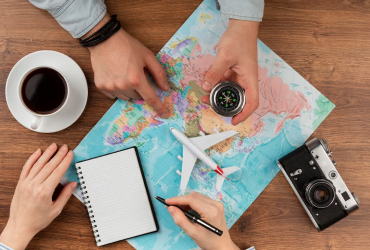
Get Special Offers From Rockjumper Birding
Sign up now and get the best deals straight in your inbox!
- Phone This field is for validation purposes and should be left unchanged.

Modal title
Enquire about booking a tour.
- Tell us about your dream tour
- How many people do you expect to be on the tour? (optional)
- What are the date ranges you are looking at for this tour? (optional)
- How many days would you like the tour for? (optional)
- What is your price range for the tour? (optional)
Enquire about booking a tour 5
Your passport.
Add Attachment
Arrival Tour Information
Departure tour information.
Why Jordan Chiles' score changed, giving her bronze medal in Olympic floor final

Editor's note: The International Olympic Committee ruled early Sunday Jordan Chiles will be required to return her Olympic bronze , which will be reallocated to Romania's Ana Barbosu.
PARIS — When the last score was announced in the women's floor exercise final Monday, Ana Barbosu of Romania leaped onto the floor with her country's flag and started jumping down in celebration. And Jordan Chiles was deflated, thinking she had missed out on the podium.
Then, in seconds, their moods flipped − and a distraught Barbosu dropped her Romanian flag on the ground.
Chiles leapfrogged Barbosu to win a stunning bronze medal on floor at the 2024 Paris Olympics after her coaches successfully challenged a minor scoring decision made by the judges, boosting her to third place from fifth. It gave the 23-year-old the first individual Olympic medal of her career, in incredibly dramatic fashion.
"I was so tired, I didn't even realize my coaches put an inquiry in," Chiles said. "And I was like, 'OK yeah, let's see.' It can vary. So when it came through, I was very proud of myself."
2024 Paris Olympics: Follow USA TODAY’s coverage of the biggest names and stories of the Games.
▶ The USA TODAY app gets you to the heart of the news — fast. Download for award-winning coverage, crosswords, audio storytelling, the eNewspaper and more .
Chiles' original score on floor exercise was 13.666, while left her just shy of Barbosu's 13.700. But after her coaches, Cecile and Laurent Landi, submitted what is known as an inquiry about her score, it went up to 13.766.
Cecile Landi said the inquiry revolved around what is called a tour jeté full − essentially a split leap.
"Today (she was) a little sloppy on the landing. But at this point, we had nothing to lose so I was like 'we're just going to try," " Cecile explained. "I honestly didn't think it was going to happen but when I heard her scream, I turned around and was like 'What?' "
Rebeca Andrade of Brazil took a surprising gold medal in the event, while Simone Biles settled for silver.
How gymnastics scores work
The scores in gymnastics comprise of two separate pieces: A difficulty score and an execution score.
The execution score, or E score, it out of a maximum of 10 points, with judges taking deductions for each misplaced hand or slight wobble on a landing. The difficulty score, or D score, is completely reliant upon the difficulty of the skills that each gymnast does throughout their routine.
This means that some athletes, like Biles, often walk into competitions with a built-in cushion because they are doing more difficult skills . And it puts more pressure on gymnasts with lower D scores to absolutely nail their planned elements.
Why Jordan Chiles' score changed on floor
During a routine, like Chiles' on floor exercise, judges are keeping track of each skill or element that the gymnast completes. Each one is worth a certain point value, adding to the D score.
After the score is announced, a gymnast's coach − who obviously knows all of the planned elements in the routine, and what that D score should be − can then choose to challenge the D score by submitting what is officially called an "inquiry." The coach basically asks why a specific skill was not credited, and sometimes that can lead to an improved score after the initial one is announced.
2024 Olympic medals: Who is leading the medal count? Follow along as we track the medals for every sport.
Chiles' initial D score on floor exercise Monday was 5.8, which left her just fractionally behind Barbosu. But after the routine, the Landis submitted an inquiry with the judging panel about that one leaping element. And it worked.
"I was not confident, but what do you have to lose?" Laurent Landi said. "She was out of the podium already, so even if they dropped the score, it couldn't have been worse, you know? We tried.
"I was at the same angle as the judge and I felt (her tour jeté full) was way better than all the other meets than she's done, so what the heck? We may as well try."
Chiles' execution score was not changed as a result of the inquiry, but the D score went up by one tenth of a point, to 5.9. And that was enough to give her a bronze.
Jordan Chiles' reaction to winning bronze on floor
The inquiry made a small difference in Chiles' score but ultimately helped her achieve her goal of winning an individual medal.
Although she won team silver and gold at the past two Games, Chiles had not qualified for an individual final before this one. Though no fault of her own, mind you. Chiles was unlucky not to be included in both the all-around and vault finals after an extremely strong performance in qualifying.
Chiles placed fourth in both the all-around and vault in qualifying. But because Biles and Suni Lee both finished ahead of her in the all-around, and Biles and Jade Carey were ahead of her on vault, Chiles was excluded by a rule that limits the field to just two gymnasts per country .
Chiles has said she is not a fan of that rule, but at least she had a chance at her own medal Monday.
"I'm on cloud nine," she told reporters. "This is my first-ever (Olympic) individual event (apparatus) final, at my second Olympics. I have no words."
Where some athletes might have sulked or scaled back, Cecile Landi said, Chiles continued coming to practice and working hard in preparation for Monday.
"She loves floor, so I think qualifying on floor really helped her keep her chin up," she said. "I'm glad she didn't give up. And it paid off today."
Contact Tom Schad at [email protected] or on social media @Tom_Schad.
Election Highlights: Harris and Walz Rally in Las Vegas to End Their Introductory Tour
Vice President Kamala Harris and Gov. Tim Walz of Minnesota were in Nevada for the final rally of their tour of battleground states. Former President Donald J. Trump tested a new attack at an event in Montana.
- Share full article

Chris Cameron Michael Gold and Simon J. Levien
Here’s the latest on the presidential race.
Vice President Kamala Harris and her running mate, Gov. Tim Walz of Minnesota, campaigned in Las Vegas on Saturday night, the final stop on their introductory tour of battleground states that began in Philadelphia on Tuesday.
Earlier on Saturday, new polls by The New York Times and Siena College showed Ms. Harris ahead of former President Donald J. Trump by four percentage points in the critical battlegrounds of Wisconsin, Pennsylvania and Michigan. The surveys of likely voters in each state were conducted from Aug. 5 to 9.
The polls were the latest sign of Ms. Harris’s political momentum since she announced that she had chosen Mr. Walz to be her vice-presidential candidate. The new ticket has been drawing large crowds, including at a rally in Glendale, Ariz. , on Friday that the Harris campaign claimed had more than 15,000 people in attendance, which would have been its biggest rally yet.
Mr. Trump was scheduled to attend fund-raisers in Jackson Hole, Wyo., and Aspen, Colo., on Saturday. On Friday, he unveiled fresh attacks against Ms. Harris during a campaign event in Bozeman, Mont., twice interrupting his speech to play compilations of some of her past remarks that his campaign hopes will portray her as overly liberal and inept.
Mr. Trump’s running mate, Senator JD Vance of Ohio, rallied near Las Vegas last week , denouncing the vice president’s role in the Biden administration’s border policies. At her Arizona rally, Ms. Harris said she supported “strong border security and an earned pathway to citizenship.”
Here’s what else to know:
A twist on that helicopter tale: Mr. Trump spent Friday doubling down on his story of nearly crashing during a helicopter ride with Willie Brown, the notable Black politician from California. Another Black politician from California, Nate Holden, said in an interview with The New York Times that he had been on a helicopter ride with Mr. Trump around 1990 when the aircraft experienced mechanical trouble and was forced to make an emergency landing in New Jersey.
A first-time endorsement: A Latino rights group backed Ms. Harris , breaking with its 95-year history of abstaining from formal presidential endorsements. The League of United Latin American Citizens, known as LULAC, said its members were stirred to action by concerns over the potential negative impact on Latinos if Mr. Trump were elected again.
Not an endorsement: Joe Rogan, the world’s most popular podcaster, backpedaled on comments he made on Thursday that seemed to throw his support behind the independent presidential candidate Robert F. Kennedy Jr. After backlash from Mr. Trump’s supporters, Mr. Rogan, the podcaster with a large, devoted following that leans young and male, posted on X that what he said was not “ an endorsement. ” Another podcaster, Tim Pool, also expressed his support for Mr. Kennedy before quickly switching his support to Mr. Trump in the face of withering criticism from Trump supporters.
A tale of two very different bank accounts: Mr. Vance and Mr. Walz both came from modest backgrounds in the Midwest, but their personal fortunes have wildly diverged since then. Mr. Vance is a multimillionaire. Mr. Walz has much less than that, and is already emphasizing that contrast on the campaign trail .
Generating buzz: A high school class lesson that Mr. Walz gave 31 years ago is getting new attention online . As a geography teacher in Nebraska in 1993, Mr. Walz asked his students to take what they had learned about the Holocaust to predict which nation was most at risk for genocide. “They came up with Rwanda,” Mr. Walz said, talking about the project at a conference last month . “Twelve months later, the world witnessed the horrific genocide in Rwanda.”
David E. Sanger and Michael Gold
David E. Sanger reported from Wellington, New Zealand. Michael Gold reported from Bozeman, Mont.
The hacking of presidential campaigns begins, with the usual fog of motives.
For the third presidential election in a row, the foreign hacking of the campaigns has begun in earnest. But this time, it’s the Iranians, not the Russians, making the first significant move.
On Friday, Microsoft released a report declaring that a hacking group run by the intelligence unit of Iran’s Islamic Revolutionary Guard Corps had successfully breached the account of a “former senior adviser” to a presidential campaign. From that account, Microsoft said, the group sent fake email messages, known as “spear phishing,” to “a high-ranking official of a presidential campaign” in an effort to break into the campaign’s own accounts and databases.
By Saturday night, former President Donald J. Trump was declaring that Microsoft had informed his campaign “that one of our many websites was hacked by the Iranian Government — Never a nice thing to do!” but that the hackers had obtained only “publicly available information.” He attributed it all to what he called, in his signature selective capitalization, a “Weak and Ineffective” Biden administration.
The facts were murkier, and it is unclear what, if anything, the Iranian group, which Microsoft called Mint Sandstorm, was able to achieve.
Mr. Trump’s campaign was already blaming “foreign sources hostile to the United States” for a leak of internal documents that Politico reported on Saturday that it had received, though it is unclear whether those documents indeed emerged from the Iranian efforts or were part of an unrelated leak from inside the campaign.
The New York Times received what appears to be a similar if not identical trove of data from an anonymous tipster purporting to be the same person who emailed the documents to Politico.
Either way, the events of the past few days may well portend a more intense period of foreign interference in a race whose sudden turns, and changes of candidates, could have thrown the hackers off their plans.
Russia has so far played a relatively minor role, investigators and cybersecurity experts say, focusing instead on seeking to undermine both the Olympics, from which it was barred from fielding its own team, and support for Ukraine. And while American intelligence officials say they have little doubt that Russia wants to see Mr. Trump return to office, Chinese hackers, they say, seem uncertain how to play the election; they have reason to dislike both Mr. Trump and Vice President Kamala Harris.
There is little doubt, investigators say, that the Iranians want to see Mr. Trump defeated. As president, he withdrew from the 2015 nuclear deal, reimposed economic sanctions on Iran and then, in January 2020, ordered the killing in Iraq of Maj. Gen. Qassim Suleimani , the commander of the Quds Force, a clandestine wing of the Revolutionary Guards responsible for foreign operations.
Four years later, the Revolutionary Guard Corps appears still determined to avenge Suleimani’s death, and just last week the Justice Department announced it had charged a Pakistani man who had recently visited Iran, accusing him of trying to hire a hit man to assassinate political figures in the U.S. , most likely including Mr. Trump. (There is no evidence that Iran was involved in the July 13 attempt on Mr. Trump’s life in Butler, Pa.)
Mr. Trump often casts his actions against Iran as evidence of his strength, despite the fact that his exit from the Iran deal gave Tehran an opening to rebuild a nuclear program that had been hobbled by the 2015 agreement. Still, the combination of the hack and the hit men looking for Mr. Trump and his former aides gave the former president an obvious foil, and he was using it over the weekend to make the case that the Iranians would prefer a continuation of the Biden-Harris administration.
Microsoft stopped short of saying that the hacking effort it detected was focused on Mr. Trump’s campaign, though the campaign itself said that was the case. In an interview, Tom Burt, the head of the company’s customer security and trust team, said that in June, “the Iranian team associated with Iranian intelligence” operations of the Revolutionary Guards successfully breached the email account of a former campaign adviser, whom the company did not name. From that account, he said, the Iranians sent a spear phishing email to an official of a presidential campaign.
While it would have appeared to the recipient to have come from the former campaign adviser, Mr. Burt refused to say whether the targeted campaign was also Mr. Trump’s. By long-established practice, Microsoft says, it can reveal such details only with the permission of the victim of an attack.
In many ways, the effort was similar in technique to what Iran attempted when it sought to interfere in the 2020 presidential campaign . This time, however, the Iranian effort looks to have been more sophisticated — namely, through the hacking of a trusted intermediary — suggesting the hackers learned something from what the Russians accomplished in past campaigns, notably in 2016.
But Mr. Burt said the company could not determine if the effort was successful in penetrating the campaign it targeted.
The documents sent to Politico, as it described them, and to The Times included research about and assessments of potential vice-presidential nominees, including Senator JD Vance, whom Mr. Trump ultimately selected. Like many such vetting documents, they contained past statements with the potential to be embarrassing or damaging, such as Mr. Vance’s remarks casting aspersions on Mr. Trump.
In a statement on Saturday, Steven Cheung, a spokesman for the Trump campaign, preemptively chastised outlets that reported on any information that was improperly obtained.
“Any media or news outlet reprinting documents or internal communications are doing the bidding of America’s enemies and doing exactly what they want,” he wrote.
The 2016 election that Mr. Trump won was marked by similar “hack and leak” efforts after Russian hackers broke into the email accounts of top Democratic officials. Leaked emails showed the internal workings of the party and of Hillary Clinton’s campaign, and also revealed criticisms of Mrs. Clinton by aides, and a trove of them was published by WikiLeaks in the final weeks of the presidential race.
Seeking an edge then, Mr. Trump’s campaign seized on the emails — many of them from Mrs. Clinton’s campaign chair, John Podesta. “We love WikiLeaks,” Mr. Trump declared at the time.
Advertisement
Nicholas Nehamas Reid J. Epstein and Kellen Browning
Nicholas Nehamas reported from Las Vegas, Reid J. Epstein from Washington and Kellen Browning from Phoenix.
Rallying in Las Vegas, Harris pledges to end federal taxes on tips.
Vice President Kamala Harris said on Saturday that she would seek to end federal income taxes on tips if she were elected president, mirroring a policy proposal that former President Donald J. Trump made earlier this year.
The proposal from Ms. Harris — which she announced in Las Vegas, where thousands of casino employees depend on tipped wages — is a priority of Nevada’s influential Culinary Workers Union. Both Ms. Harris and her running mate, Gov. Tim Walz of Minnesota, recognized the union in their remarks to a packed basketball arena on Saturday night.
“When I am president,” Ms. Harris told the Las Vegas crowd, “we will continue our fight for working families of America, including to raise the minimum wage and eliminate taxes on tips for service and hospitality workers.”
The “no tax on tips” pitch has garnered bipartisan support since Mr. Trump first floated it in June , including from Senator Ted Cruz, the Texas Republican, and both of Nevada’s Democratic senators, Catherine Cortez Masto and Jacky Rosen. Mr. Trump also announced his support for the policy in Las Vegas.
The former president responded immediately to Ms. Harris’s proposal on Saturday night, posting on his social media website, Truth Social, that she had “copied” his own. “This was a TRUMP idea,” he wrote. “She has no ideas, she can only steal them from me.”
The Las Vegas stop was the last public event of a five-city introduction of the Harris-Walz ticket. As with the other rallies, Ms. Harris and Mr. Walz drew a crowd many times larger than any that had shown up for President Biden while he was seeking re-election.
By Saturday, there were signs that some of the Democrats’ good vibes may have an expiration date. The Harris campaign said Mr. Walz “misspoke” when he said he had carried weapons of war “in war” in a video articulating his views on gun control. And Ms. Harris, before her event in Las Vegas, answered several questions from reporters for the first time since becoming the Democratic nominee — a development that took place after pressure from Mr. Trump and his campaign.
But overall, the week’s rollout was widely viewed as a success. Ms. Harris has engendered more enthusiasm than any Democratic nominee since Barack Obama in 2008. The appointment of Mr. Walz as her running mate took place without any significant grumbling from the party — a bit of a surprise after a two-week vice-presidential audition that surfaced ideological divisions in the party, particularly over the war in Gaza.
On Saturday, Mr. Walz urged the crowd at the arena on the campus of the University of Nevada, Las Vegas — which the campaign said included more than 12,000 people — not only to vote for the Democratic ticket but also to work to ensure their friends and neighbors did, too.
“I know very clearly that I am preaching to the choir,” Mr. Walz said. “But here’s my words for you: The choir needs to sing. The choir needs to sing.”
During stops in Philadelphia , Wisconsin , Detroit and Arizona , Ms. Harris and Mr. Walz spoke to capacity crowds. By the end of the week, the high points in their stump speeches had become familiar enough to audiences that people in the crowd shouted them along with the candidates. All told, the new running mates drew more than 64,000 attendees to their rallies, according to estimates from the campaign.
“Aren’t they a breath of fresh air?” Representative Susie Lee, Democrat of Nevada, asked attendees in Las Vegas.
Mr. Biden had trailed Mr. Trump badly in Nevada, where inflation is a top concern for many voters. But Ms. Harris has tightened that gap significantly since Mr. Biden dropped out.
On Friday, the vice president secured the backing of the Culinary Workers Union, an endorsement that will likely add to her campaign’s organizing operation and eventual voter turnout.
The culinary union is a 60,000-member organization that represents casino and hotel workers and has been a key part of the coalition that has helped Democrats win in Nevada.
Mariana Swanson, a culinary union member who worked as a restroom attendant at a Las Vegas nightclub where she depended on tips, said Ms. Harris’s announcement came as a “shock,” though a welcome one.
“It’s more money for taking care of your family,” said Ms. Swanson, 43, a Democrat and one of many attendees wearing a red culinary union T-shirt. “It’s more money for paying your bills.”
With her promises to raise the minimum wage and eliminate taxes on tips, Ms. Harris seemed to preview the planned release of her policy platform next week. She had told reporters earlier on Saturday that the platform would focus on the economy and lowering costs for working families.
In addition to rank-and-file Democrats, wealthy donors are also responding to the new ticket. On Sunday, Ms. Harris was scheduled to attend a fund-raiser in San Francisco that drew more than $12 million in contributions, her campaign said.
Ms. Harris’s crowd in Las Vegas would have been larger than it was, but law enforcement officials closed the doors as people fell ill while waiting outside the arena in temperatures that reached 109 degrees. Roughly 4,000 people were in line at that point and had to be turned away, the Harris campaign said.
“Don’t worry,” a hoarse-voiced Mr. Walz promised those who had made it inside. “We’re going to be back a lot.”
Before the rally began, thousands of attendees stood and danced in their seats waving Harris-Walz signs, as disco remixes, hip-hop and Latin pop blared over the speakers and the arena’s lights flashed in multicolored rhythm.
“We’ve got a party up in here,” D-Nice, a D.J. and the event’s M.C., shouted to roars of approval. “Let’s light this place up.”
Nicholas Nehamas
Harris has wrapped up here in Las Vegas. She made news by endorsing a “no tax on tips” proposal that has wide bipartisan appeal and had previously been proposed by Trump.
Vice President Harris just said that as president she would support making tipped income tax-free, a major issue in Nevada, where much of the economy is service-based. It’s a proposal that has already been floated by her Republican opponent, former President Donald J. Trump.
Harris also expressed support for raising the federal minimum wage. She told reporters earlier today that she would release her policy platform next week, with a focus on the economy and on lowering costs for working families.
Michael Gold
Donald Trump accused Harris of copying his “no taxes on tips” policy. In a post on his social media site, Truth Social, he wrote that Harris “has no ideas, she can only steal from me” and insisted that she would not follow through on the pledge. “This was a TRUMP idea,” he wrote.
Harris is now joining Walz onstage to deafening cheers from the crowd.
Walz is telling the story of his decision to join the National Guard at 17. Republicans have raised questions about his decision to retire from the Guard more than two decades later when it was rumored his unit would be deployed to Iraq.
Gov. Tim Walz of Minnesota has taken the stage, his first visit to the crucial swing state of Nevada as Harris’s running mate. “I’m melting like a snowman outside,” the Minnesotan says of the Las Vegas heat.
Tilly Torres, a Las Vegas teacher, is introducing Harris. She said she had $87,000 in student debt forgiven through the Biden administration’s actions, one of its more popular initiatives. “For the first time,” Torres said, “I have financial freedom.”
Torres also has kind words for Gov. Tim Walz of Minnesota, Harris’s running mate, saying that if he can “handle a high school lunch room,” then the vice presidency will be a piece of cake.
Beyonce’s song “Freedom” is blasting through this packed college basketball arena in Las Vegas, meaning Harris will soon appear.
Vice President Kamala Harris is 35 minutes and counting behind schedule for her remarks in Las Vegas tonight.
Reid J. Epstein
The Harris campaign said it was set to raise $12 million at a San Francisco fund-raiser on Sunday. Former House Speaker Nancy Pelosi is expected to speak to some 700 people.
Theodore Schleifer
Fun fact — that $12 million is precisely the amount that former President Donald J. Trump raised in San Francisco at an event this summer. But Trump raised it from only about 100 people.
The Harris campaign says that more than 12,000 people are attending her rally in Las Vegas tonight. But law enforcement officials closed the doors as people fell ill while waiting outside in temperatures that reached 109 degrees. Roughly 4,000 people were in line at that point and had to be turned away, the campaign said.
Don’t expect to hear this later from Vice President Kamala Harris, but one of her warm-up speakers, Representative Dina Titus, a Nevada Democrat, just made a joke about a false rumor circulating on the internet about Senator JD Vance of Ohio, former President Donald J. Trump’s running mate. “You better hide behind that sofa because we’re coming for you,” Titus said to laughter from a crowd of thousands.
The crowd here quickly joined Representative Steven Horsford, Democrat of Nevada, in a chant of “We’re not going back,” a rallying cry in Harris’s stump speech. The easy recognition shows how familiar Democrats are growing with her applause lines.
Nicholas Nehamas Jazmine Ulloa and Shane Goldmacher
Nicholas Nehamas reported from Las Vegas, Jazmine Ulloa from Washington and Shane Goldmacher from Phoenix.
Harris hopes a new playbook will neutralize G.O.P. attacks on immigration.
For weeks, Republicans have pummeled Vice President Kamala Harris on immigration, blaming her for President Biden’s policies at the border.
Now, Ms. Harris, the Democratic presidential nominee, is seeking to neutralize that line of attack, one of her biggest weaknesses with voters, running a playbook that Democrats say has worked for them in recent elections and staking out her clearest position yet as a tough-on-crime prosecutor focused on securing the border.
This week, she has hit back by promising to heighten border security if elected and slamming her Republican opponent, former President Donald J. Trump, for helping kill a bipartisan border deal in Congress. And her campaign has walked back some of the more progressive positions she took during her bid for the Democratic nomination in 2019, including her stance that migrants crossing the U.S. border without authorization should not face criminal penalties.
“I was attorney general of a border state,” Ms. Harris, who was once California’s top prosecutor, said on Friday at a rally in Arizona, a swing state where immigration is a top concern for voters. “I went after the transnational gangs, the drug cartels and human traffickers. I prosecuted them in case after case, and I won.”
A day earlier, the Harris campaign released a television advertisement highlighting her pivot. The ad, targeted to voters in the battleground states, promised that Ms. Harris would “hire thousands more border agents and crack down on fentanyl and human trafficking.” It made no mention of undocumented immigrants already in the United States — a top priority for many progressives and immigration activists — although in her Arizona speech Ms. Harris stressed the importance of “comprehensive reform” that includes “an earned pathway to citizenship.”
No other Democratic nominee has taken a position this tough on border security since Bill Clinton. Her stance reflects a change in public opinion since Mr. Trump left the White House in 2021. More Americans, including many Democrats and Latino voters, have expressed support for hard-line immigration measures.
The shift in public opinion comes as Republicans have escalated their rhetoric against migrants. Border crossings skyrocketed during the Biden administration, though more recently they have sharply declined since a Biden executive order designed to clamp down on the border. The question for Ms. Harris is whether her new message as the party’s standard-bearer will come too late for voters who have already formed opinions of her record.
Senior Trump campaign officials have ranked immigration as among Ms. Harris’s deepest vulnerabilities and sought to pin responsibility for the Biden administration’s policies on her, calling her the “border czar.” The title far exceeds the actual policy portfolio given to her by Mr. Biden, who asked her to address the root causes of migration from Latin America.
Democratic polling has raised similar concerns about Ms. Harris’s immigration record. Blueprint, a Democratic group, recently tested six potential Republican lines of attack on Ms. Harris — including labeling her the “border czar” — and found that those involving immigration were the most effective, even more so than attacks related to the economy and inflation.
Other polls have shown that voters place more trust in Mr. Trump’s ability to handle border issues than in Ms. Harris’s. But if Ms. Harris can at least counter Republican arguments on immigration, she may be able to sway voters on issues more friendly to Democrats, such as abortion, her allies say.
The decision for the Harris campaign to frame her record as California attorney general as a “border-state prosecutor” stands in contrast to how she ran in the 2020 Democratic primary.
Then, during a debate, she raised her hand in response to a question about whether people who are here illegally should be eligible for public health care.
For his part, Mr. Trump has attacked Ms. Harris over the border in dark terms, engaging in fear-mongering about migrants and using dehumanizing language to falsely paint them as a threat to Americans .
“Every day, Kamala is letting migrant criminals roam free to assault, rape, mutilate and kill our citizens,” the former president said at a rally in Montana on Friday.
Chris DeRose, a Republican who served as a clerk of courts in Arizona’s Maricopa County, said many swing voters would be dubious of Ms. Harris’s rhetoric.
“She’s part of the Biden-Harris administration,” Mr. DeRose said. “There’s going to be some skepticism.”
But Ms. Harris and her allies have tried to make Mr. Trump’s immigration record into its own campaign issue. This year, Mr. Trump successfully convinced Senate Republicans to kill a bill supported by Mr. Biden and Ms. Harris that would have effectively mandated that the border be shut down to migrants when numbers reached certain levels and that vastly expanded detentions and deportations.
“Donald Trump tanked the deal,” Ms. Harris said in Arizona as a crowd of more than 15,000 supporters booed. “Because he thought by doing that it would help him win an election.”
Jen Cox, a senior adviser for the Harris campaign in Arizona, said Democrats in that state, including Senator Mark Kelly, had won elections with tougher messages on immigration.
“Voters want to see folks be serious about actually fixing the broken immigration system and securing the border,” Ms. Cox said in an interview. “They don’t want to see folks play politics with it.”
In a closely watched special election in New York this year, Tom Suozzi, a Democrat, won a competitive House race after slamming Mr. Trump over the scuttled border deal and taking unusually hard-line stances for a member of his party, including calls to temporarily shut down the border and deport migrants who assault the police.
“The most effective politician is the one that says what the people are thinking already,” Mr. Suozzi said. “And people are talking about this issue. They are very much concerned about it. And the vice president can continue to emphasize that, yes, we recognize this is a problem and we are willing to compromise to solve the problem, unlike the other side.”
Harris campaign aides say her move to the center since the 2020 primary had been shaped by her time as vice president.
Mike Madrid, a longtime G.O.P. consultant focused on Latino voters, said Ms. Harris’s pledge to sign the border security bill, which did not include protections for undocumented immigrants already in the United States, and the security-focused message of her new television ad reflected wider changes among Democrats.
Since the Obama years, Democrats had sought to fuse efforts to increase border security with calls to establish permanent paths to legal residency and citizenship for the roughly 10 million undocumented immigrants in the United States, many of whom have lived in the country for years, holding jobs, paying taxes and starting families.
But the Latino electorate, the fastest-growing slice of the voter bloc, now tends to be third- and fourth-generation voters more removed from the immigration experience, Mr. Madrid said.
“This doesn’t mean you have to go all Donald Trump on immigration,” he said. “It means you have to lead with border security and then weave in the elements of immigration reform later.”
Michael Gold contributed reporting from Bozeman, Mont., and Reid J. Epstein contributed reporting from Washington.
Hundreds of people are waiting outside to get into a Harris campaign rally at a basketball arena in Las Vegas, where the temperature is 107 degrees.
Inside, it’s a full celebration, with thousands of people standing and dancing in their seats to disco remixes. “We’ve got a party up in here,” the D.J. D-Nice, the event’s M.C., says over the speakers. It cannot be said enough how different the energy at Harris’s rallies has been from that at President Biden’s.
Vice President Kamala Harris took five questions from the traveling press pool on Saturday. It was the first time since she became the Democratic presidential nominee that she engaged with journalists even to that degree. She said she planned to deliver a policy platform next week.
Harris has faced criticism — including from former President Donald J. Trump — for not holding a news conference or sitting for interviews with journalists.
The singer Celine Dion, in a statement on social media, said she and her management team did not authorize or endorse the playing of “My Heart Will Go On,” her hit song from the movie “Titanic,” at a Trump rally in Montana on Friday. The Trump campaign has played the song at multiple rallies recently, and Trump has over the years received several requests from artists asking him not to use their music at his political events.
Neil Vigdor
The Harris campaign says Walz “misspoke” in a comment about his military service.
Officials for Vice President Kamala Harris’s campaign are trying to clean up remarks made in 2018 by her running mate, Gov. Tim Walz of Minnesota, that gave the impression that he had served in combat, just days after the campaign had inadvertently drawn attention to them to illustrate Mr. Walz’s views about responsible gun ownership.
In a clip from a political event in 2018, when he represented Minnesota in the House, Mr. Walz referenced his 24 years in the Army National Guard and background as a hunter while discussing his views on gun control. He spoke of supporting common-sense gun legislation that also protects Second Amendment rights, including background checks and restrictions on high-powered firearms.
“We can make sure that those weapons of war that I carried in war is the only place where those weapons are at,” Mr. Walz said in the clip, which the campaign had shared Tuesday on social media, just hours after Ms. Harris named him as her running mate.
Mr. Walz deployed after the Sept. 11 terrorist attacks as part of Operation Enduring Freedom, but not in a combat zone.
Lauren Hitt, a spokeswoman for the Harris-Walz campaign, said in a statement on Saturday that Mr. Walz’s remarks had been a misstatement and that he had not tried to mislead anyone about his military service.
“In making the case for why weapons of war should never be on our streets or in our classrooms, the governor misspoke,” Ms. Hitt said.
Mr. Walz, who is in his second term as Minnesota’s governor, has come under intense scrutiny from Republicans over his military record . They have accused him of exaggerating his record and also of quitting the Army National Guard two decades ago to avoid being deployed to Iraq, rekindling claims made by two retired command sergeant majors during Mr. Walz’s first campaign for governor in 2018.
Leading that criticism is Senator JD Vance of Ohio, former President Donald J. Trump’s running mate, who has accused Mr. Walz of “stolen valor.”
Mr. Vance served in the U.S. Marine Corps from 2003 to 2007 during the Iraq war. He was deployed to Iraq in 2005 and 2006 with the aircraft wing but was not a frontline combatant. His official military occupation, known as a combat correspondent, meant he was tasked with basic communication roles such as writing articles about the happenings in his unit.
The Republican broadsides against Mr. Walz resembled the “Swift Boat” attacks in the 2004 presidential election that created a cloud of uncertainty over the military record of Senator John F. Kerry, then the Democratic presidential nominee. Chris LaCivita, who is a senior strategist for the Trump campaign, was an architect of those attacks, which were highly effective.
The conservative-leaning editorial board of The Wall Street Journal spurned comparisons this week between Mr. Kerry’s situation and Mr. Walz’s military service, which it wrote was “far different.” It said that there were plenty of reasons to criticize Mr. Walz, but that his military record was not one of them. It quoted a New York Sun editorial that described the attacks as “thin gruel.”
On a number of occasions, Mr. Walz has emphasized that he did not serve in combat. During a CNN interview last month, when the anchor Jake Tapper said that Mr. Walz had deployed to Afghanistan, Mr. Walz corrected him and said that he had served in Europe in support of that war.
In an interview with Minnesota Public Radio in 2018, when he was running for governor, Mr. Walz said of his military career: “I know that there are certainly folks that did far more than I did.”
And when Mr. Walz was running for re-election as governor in 2022, The Minneapolis Star Tribune wrote that he had shied away from dramatic accounts of his time in the National Guard, framing himself instead as a former high school teacher and football coach.
The 2018 clip of Mr. Walz saying that “those weapons of war that I carried in war is the only place where those weapons are at,” was not the only one that Mr. Trump’s allies seized on this week.
They also pounced on a 2007 C-SPAN clip from a Capitol Hill news conference when Representative Nancy Pelosi, the House speaker at the time, thanked Mr. Walz for his service “on the battlefield.” Mr. Walz was identified by C-SPAN as an “Afghanistan war veteran” at the time.
Reid J. Epstein , Michael C. Bender , Thomas Gibbons-Neff and John Ismay contributed reporting.
In a memo, Tony Fabrizio, the Trump campaign’s chief pollster, argued that new polls by The New York Times and Siena College “dramatically understated President Trump’s support.” Fabrizio cited polls conducted in the days before the 2020 election that accurately predicted President Biden’s victory but overestimated the margin.
Donald Trump will attend two fund-raisers today in mountain resort towns favored by the wealthy. First, he’ll attend a lunch event in Jackson Hole, Wyo., then he will travel to a dinner fund-raiser in Aspen, Colo.
A former Trump administration official and climate change denier, appearing in a leaked training video for Project 2025, emphasized that the next Republican president must be focused on reversing the federal government’s current environmental policies. “If the American people elect a conservative president, his administration will have to eradicate climate change references from absolutely everywhere,” said Bethany Kozma, a former deputy chief of staff at the United States Agency for International Development. The video is one of several that were obtained by ProPublica, a nonprofit newsroom, and the journalism project Documented.
Former President Donald J. Trump has tried to extricate himself from the negative attention surrounding Project 2025, the right-wing policy playbook prepared for the next Republican president that Democrats have used as a political cudgel.
Adam Nagourney
As a rule, candidates who think they are ahead do not challenge their opponent to three debates, as Donald Trump did with Kamala Harris the other day. So it’s a pretty good bet that Trump’s own polling — or at the least, his political gut — had picked up on what Times/Siena college poll reports this weekend: that Harris could be a much tougher opponent than Biden.
Michael Gold and Simon J. Levien
Reporting from Bozeman, Mont.
Fine-tuning his attacks on Harris, Trump tries using her words against her.
As former President Donald J. Trump continues to reach for attacks on his new opponent, Vice President Kamala Harris, that might halt her political momentum, he unveiled a new tactic at a rally in Bozeman, Mont., on Friday night, aiming to use Ms. Harris’s own words against her.
Interrupting his typical pattern of a digressive and lengthy speech, Mr. Trump played two video compilations of past remarks by Ms. Harris that his campaign hopes will portray her as overly liberal and inept.
The first video drew on statements that Ms. Harris made during the 2020 presidential campaign, when she tacked to the left and backed progressive ideas on criminal justice reform. The second was a montage of interviews and speeches that Mr. Trump’s campaign used to mock her speaking style and insult her intelligence.
The videos did little to alter the message that the Trump campaign has deployed against Ms. Harris for weeks and that Mr. Trump summed up during his speech on Friday.
“America cannot survive for four more years of this bumbling communist lunatic,” Mr. Trump told thousands gathered in the Brick Breeden Fieldhouse at Montana State University. “We cannot let her win this election.”
Mr. Trump and his allies have repeatedly tried to portray Ms. Harris as more liberal than President Biden in the three weeks since he ended his campaign and cleared the way for her to be the Democratic presidential nominee.
The video compiling her past positions accused her of supporting a ban on fracking, mandatory gun buybacks and a single-payer health insurance system like “Medicare for all.”
Ms. Harris has backed away from those policy positions, which largely stem from her time in the 2020 presidential race. But Mr. Trump — who has been known to flip-flop or equivocate on hot-button issues like abortion — argued that her early statements were the only ones that mattered.
Mr. Trump’s rally on Friday was his first since Ms. Harris chose Gov. Tim Walz of Minnesota as her running mate, and he used the selection to bolster his portrait of the Democratic ticket as overly liberal. Effectively likening Mr. Walz to a socialist, he accused the governor of being too lax in his response to protests that turned to riots in Minneapolis after the police murder of George Floyd and for signing a law giving access to menstrual products to transgender children.
Referring to Mr. Walz as “Comrade Walz,” Mr. Trump argued that Ms. Harris tapped him for his progressive bona fides. “This is her ideology,” he said.
Mr. Trump also acknowledged that he has frequently mispronounced Ms. Harris’s given name in recent speeches, though he added that he “couldn’t care less” how it should be pronounced. He admitted that he has in the past “done a lot of bad name-calling” in which he has purposefully mispronounced a person’s name. “They say, ‘Sir, you made a mistake,’” Mr. Trump recounted. “I said, ‘No, I didn’t.’”
Still, Mr. Trump’s speech offered continued evidence of the growing pains he has faced as he tries to shift years of attacks against Mr. Biden toward Ms. Harris.
Even as he argued that Ms. Harris was more extreme than Mr. Biden, he tied her to the president’s policies on immigration and the economy.
At one point, he said she was the one running the country the past four years, even as he repeatedly argued that she was too unintelligent or incompetent to do so effectively. Mr. Trump has long made the same argument about Mr. Biden.
Mr. Trump's rally is part of a western swing that includes fund-raisers in mountain resort towns favored by the wealthy. Before he took the stage in Bozeman, he attended an event in Big Sky, Mont., and on Saturday he will travel to fund-raisers in Jackson Hole, Wyo., and Aspen, Colo.
Montana is not an obvious site for a presidential campaign rally. Mr. Trump won the state handily in both 2016 and 2020, and he is expected to do so again in November. But with Republicans keen on flipping Democrats’ narrow edge in the Senate, Mr. Trump traveled to Montana to support his party’s Senate candidate there, Tim Sheehy, who is looking to unseat the Democratic incumbent, Senator Jon Tester.
At one point, Mr. Trump, whose flight to Bozeman was diverted to another city after his plane suffered a mechanical issue, reflected on how long it takes to travel to Montana.
“I’ve got to like Tim Sheehy a lot to be here,” he said.
Shawn Hubler Maggie Haberman and Heather Knight
Yes, Trump was in a scary helicopter ride, but not with that politician.
Donald J. Trump was doubling down on Friday about his story of nearly crashing during a helicopter ride once with Willie Brown, the notable Black California politician.
He was so adamant that it had happened that he threatened to sue The New York Times for reporting that the story was untrue , then posted on his social media site that there were “‘Logs,’ Maintenance Records, and Witnesses” to back up his account.
“It was Willie Brown,” Mr. Trump, who spent much of the last year hoping to make gains with Black voters, posted. “But now Willie doesn’t remember?”
Mr. Brown, 90, who was mayor of San Francisco and speaker of the California Assembly, gave several interviews on Thursday and Friday saying such a trip never occurred.
Turns out, however, that there was a Black politician from California who once made an emergency landing in a helicopter with Mr. Trump. It just wasn’t Mr. Brown.
Nate Holden, 95, a former Los Angeles city councilman and state senator, said in an interview with The Times that he had been on a helicopter ride with Mr. Trump around 1990 when the aircraft experienced mechanical trouble and was forced to make an emergency landing in New Jersey.
Recounting an episode that he had described earlier on Friday to Politico, Mr. Holden said Mr. Trump had been seeking to develop the site of the Ambassador Hotel in Los Angeles when it was part of Mr. Holden’s district. Mr. Trump wanted him to see his Taj Mahal casino, Mr. Holden said, so on a visit to Manhattan, he rode with Mr. Trump from his Midtown skyscraper to a helipad, where the two took off for Atlantic City, accompanied by Mr. Trump’s brother Robert and by his executive vice president of construction and development, Barbara Res.
“He was trying to impress me,” Mr. Holden said. “We start flying to New Jersey. He said, ‘Look at the skyline! Look at how beautiful it is! And I’m part of it!’”
Mr. Holden said he wasn’t impressed. “I grew up in New Jersey,” he said. “It ain’t nothing new to me.”
“Anyway,” he continued, “we start flying to Atlantic City. He’s talking about how great things are. And about 15, 20 minutes in, the pilot yells, ‘Shut up! Shut up!’”
The hydraulic system had failed, he said. “Donald turned white as snow,” Mr. Holden recalled. “He was shaking.”
Mr. Holden said that as the helicopter’s crew worked frantically to set the aircraft down safely, his own thoughts ran to a helicopter crash in 1989 that had killed three senior executives of Mr. Trump’s casinos over Forked River, N.J.
“I just thought, how the hell do you let your staff not maintain your aircraft after you just had a crash that killed some of your staff? How could you let this happen again? I thought, if we go down, this is your fault.”
The helicopter ultimately landed safely in Linden, N.J., Mr. Holden said.
Ms. Res wrote about the episode in a memoir and corroborated Mr. Holden’s account in a brief interview late Friday. Ms. Res, who also spoke to Politico, recalled that Mr. Trump liked to say that Mr. Holden had “turned white” from fear, but that it was actually Mr. Trump whose face was ashen.
A spokesman for Mr. Trump did not immediately respond to an email seeking comment.
Mr. Holden said he was in his living room watching Mr. Trump’s news conference on TV on Thursday when the former president told of experiencing a brush with death on a helicopter ride with Mr. Brown.
“I said, ‘What the hell is this?’” Mr. Holden said. “‘Was he in two near-fatal helicopter crashes? He didn’t fix those damn helicopters yet?’”
Mr. Holden said that he called Mr. Brown to compare notes. Mr. Brown told him he had never been in a helicopter with Mr. Trump.
“I said, ‘Willie, you know what? That’s me!’” Mr. Holden said. “And I told him, ‘You’re a short Black guy and I’m a tall Black guy — but we all look alike, right?’”
Mr. Holden gave his own height as 6-foot-1. “Willie has to be about 5-foot-6. Maybe 5-foot-5. He comes up to about my shoulders. And he’s bald. And I’m not bald.”
Mr. Brown, he said, “just laughed and laughed.”
Mr. Holden, summing up his assessment of Mr. Trump’s recollection, said: “I just think he makes things up. That’s what I think. He never thought anybody’s going to check.”
Mr. Trump told the story about nearly dying in a helicopter crash with Mr. Brown after a reporter at Thursday’s news conference asked him a leading question about Vice President Kamala Harris’s long-ago relationship with Mr. Brown and whether it helped her career trajectory.
The two dated in 1994 and 1995 when she was a prosecutor in Alameda County, which includes Oakland, and Mr. Brown was the Assembly speaker. Mr. Brown appointed Ms. Harris to two state boards before she ended their relationship.
“Well, I know Willie Brown very well,” Mr. Trump responded. “In fact, I went down in a helicopter with him.”
He recounted how the two had a close brush with death — “We thought maybe this was the end” — and that Mr. Brown used the frightening ride to tell him “terrible things” about Ms. Harris. “He was not fan of hers very much, at that point,” Mr. Trump said.
Mr. Trump had previously told the story, saying it was Mr. Brown on a helicopter with him, in his book, “Letters to Trump,” which was published in 2023.
Reached again Friday night, Mr. Brown reiterated that he had never flown in a helicopter with Mr. Trump and that he had not denigrated Ms. Harris to the former president because he admires and respects her.
“Those are the two things I am certain of,” he said. “All the rest of this is amusing.”
Asked if Mr. Trump might have confused the two California politicians because they are both Black, Mr. Brown said, “I wouldn’t want to conclude that he can’t tell Black people apart, because I’d hate for him to think that I’m Beyoncé.”
And then he burst out laughing.
Kellen Browning and Shane Goldmacher
Reporting from Glendale, Ariz.
Harris rides momentum to Arizona, for what her campaign says is largest rally yet.
Vice President Kamala Harris rolled into Arizona on Friday evening with the same political momentum that has infused her first swing across the country this week, drawing a crowd that her campaign estimated at more than 15,000 — her largest yet — in a Western state that not long ago appeared to be falling off the battleground map.
Along with her newly minted running mate, Gov. Tim Walz of Minnesota, Ms. Harris delivered a stump speech that is barely a week old, and yet familiar enough to an impassioned new following that some shouted her lines before she did.
The rally was her fourth in four days with an arena-filling crowd that demonstrated the degree to which her candidacy replacing President Biden’s had remade the 2024 race.
Mr. Walz relished the crowd that filed into the Desert Diamond Arena in Glendale, Ariz., in 100-degree heat as he poked fun at Mr. Trump’s obsession with rally crowds.
“It’s not as if anybody cares about crowd sizes or anything,” Mr. Walz said to knowing cheers.
Despite her momentum, Ms. Harris faces an uphill battle in Arizona , a longtime Republican stronghold that flipped to Mr. Biden in 2020 but, according to polling, had been drifting back to former President Donald J. Trump this year.
To win, she will need to reunite the diverse coalition of voters who delivered the state four years ago, and she made an explicit appeal to one part of that group on Friday: Native American voters.
“As president, I will tell you, I will always honor tribal sovereignty and respect tribal self-determination,” she said. The first speaker at the rally, notably, was Stephen Roe Lewis, the governor of the Gila River Indian Community, south of Phoenix.
In her speech, Ms. Harris zeroed in on two issues that are especially pertinent to Arizonans: immigration and abortion.
Crossings from Mexico into Arizona have remained high this year even as they have dropped elsewhere, and Ms. Harris positioned herself as supporting both an “earned pathway to citizenship” and tougher border restrictions, pointing to her record as California’s attorney general.
“I went after the transnational gangs, the drug cartels and the human traffickers,” Ms. Harris said. “I prosecuted them in case after case, and I won. So I know what I’m talking about.”
By contrast, Ms. Harris said, Mr. Trump was playing politics with the issue. She highlighted his opposition to a bipartisan bill this year that would have beefed up border security.
“He talks a big game about border security,” she said, “but he does not walk the walk.”
The comments come as her campaign began to air a tough-on-immigration ad that labeled her a “border-state prosecutor.” Senior Trump campaign officials see the border and immigration as one of Ms. Harris’s deepest areas of vulnerability, and his campaign has repeatedly labeled her, inaccurately , as Mr. Biden’s failed “border czar.”
Ms. Harris did add a new riff to her speech, responding to Mr. Trump’s muddled comments on Thursday at a news conference in Florida, in which he did not rule out directing the Food and Drug Administration to revoke access to abortion pills.
Ms. Harris said Mr. Trump’s agenda “would ban medication abortion in every state,” adding, “But we are not going to let that happen — because we trust women.”
Mr. Trump has previously supported the Supreme Court’s ruling on the abortion drug mifepristone. Karoline Leavitt, a Trump spokeswoman, said in a statement the former president’s position on mifepristone “remains the same — the Supreme Court unanimously decided on the issue and the matter is settled.”
The abortion rhetoric could prove especially potent in Arizona, where the State Supreme Court reinstated a near-total ban on the procedure this year. The State Legislature eventually repealed it, but abortion is still banned after 15 weeks, and voters will have a chance to enshrine the right to an abortion until fetal viability in the state’s Constitution through a ballot measure in November.
The speakers who preceded Ms. Harris on Friday made a number of appeals to independents and moderate Republicans, another segment she will need to win over.
“I do not recognize my party,” said John Giles, the mayor of Mesa, Ariz., who is a prominent Republican backing Ms. Harris. “We need to elect a ticket who will be the adults in the room.”
Senator Mark Kelly, the Arizona Democrat who is also a Navy veteran and former astronaut, introduced Ms. Harris and Mr. Walz. It was the second time this week that a finalist in Ms. Harris’s running-mate sweepstakes introduced her at a rally. Gov. Josh Shapiro of Pennsylvania did the same in Philadelphia on Tuesday.
Mr. Kelly said Mr. Trump had “zero respect for any of us who have worn the uniform.” Mr. Trump’s allies have raised questions about Mr. Walz’s decision to leave the National Guard in 2005 to run for Congress.
Attendees and speakers said the enormous crowd braving scorching desert temperatures on Friday was a sign that, after months of dreariness among Democrats, momentum in Arizona was finally on their side.
“It may be a little warm outside,” Kate Gallego, the mayor of Phoenix, said, “but based on the energy in this arena, I know it’s Donald Trump who’s feeling the heat.”
Maggie Haberman
Trump claims he has helicopter trip records and threatens to sue.
Former President Donald J. Trump on Friday afternoon vehemently maintained that he had once been in a dangerous helicopter landing with Willie Brown , the former mayor of San Francisco, and insisted he had records to prove it, despite Mr. Brown’s denial.
In an angry phone call to a New York Times reporter as he landed several hours away from his planned rally in Bozeman, Mont., because of a mechanical issue on his plane, Mr. Trump excoriated The Times for its coverage of his meandering news conference on Thursday at Mar-a-Lago, his private club and home, during which he told of an emergency landing during a helicopter trip that he said both he and Mr. Brown had made together.
Mr. Trump was expected to keep his rally schedule on Friday as planned, boarding a smaller plane to complete the journey.
Mr. Brown denied on Thursday that he had ever flown in a helicopter with Mr. Trump.
It appeared Mr. Trump may have confused Willie Brown with Jerry Brown, the former governor of California, with whom Mr. Trump traveled by helicopter in 2018 while surveying wildfire damage in the state. But Jerry Brown, who left office in January 2019, said through a spokesman, “There was no emergency landing and no discussion of Kamala Harris.”
Willie Brown, who was a boyfriend of Vice President Kamala Harris during the 1990s, knew Mr. Trump as a potential business associate during those years, when Mr. Trump, then a New York developer, was working on new projects. A biography of Ms. Harris, “Kamala’s Way: An American Life,” reported that Mr. Trump had sent his private plane for Mr. Brown and Ms. Harris in 1994 to fly them from Boston to New York City.
“We have the flight records of the helicopter,” Mr. Trump insisted Friday, saying the helicopter had landed “in a field,” and indicating that he intended to release the flight records, before shouting that he was “probably going to sue” over the Times article.
When asked to produce the flight records, Mr. Trump responded mockingly, repeating the request in a sing-song voice. As of early Friday evening, he had not provided them.
Mr. Trump has a history of claiming he will provide evidence to back up his claims but ultimately not doing so.
He has also told the helicopter story before, in his 2023 book, “Letters to Trump,” in which he published letters to him from a number of people, including Mr. Brown. In the book, Mr. Trump wrote, “We actually had an emergency landing in a helicopter together. It was a little scary for both of us, but thankfully we made it.”
Two rivals in Michigan’s crucial Senate contest say they were both swatted.
The two leading contenders for Michigan’s open Senate seat disclosed that they had been targeted in separate “swatting” incidents in a span of less than 24 hours, just days after winning primaries in a crucial contest that could determine which party controls the chamber.
The first incident, involving Representative Elissa Slotkin, a Democrat, happened on Thursday night at her home in Oakland County, north of Detroit. The second one occurred on Friday at an address that had been listed on public records under the name of Mike Rogers, the Republican candidate and former House member, in neighboring Livingston County.
Politicians on both sides of the political aisle have increasingly been the target of swatting in recent years. The hoaxes — when false threats are deliberately made to law enforcement to draw a heavily armed response to a person’s home — have added to a climate of intimidation and the harassment of public officials.
Ms. Slotkin was not home at the time of the incident, according to a spokeswoman for her office, Lynsey Mukomel, who said in a statement that Michigan State Police troopers went to the residence after a false threat was emailed to a local official. She did not elaborate on the nature of the false threat. Michigan State Police confirmed they responded.
“Michigan State Police checked the property and confirmed no one was in danger,” Ms. Mukomel said, adding that U.S. Capitol Police would investigate the incident.
Mr. Rogers, a former longtime House member who was endorsed by former President Donald J. Trump, experienced a similar incident around 12:30 p.m. Eastern time on Friday, said Chris Gustafson, a spokesman for his campaign.
A person reported that a man was holding a woman at gunpoint at the property in Livingston County connected with Mr. Rogers, according to Mr. Gustafson, who said that Mr. Rogers currently does not live there but that other members of his family do. (Mr. Rogers now lives in Oakland County, Mich., according to his campaign.)
Shanon Banner, a Michigan State Police spokeswoman, said that a sergeant had responded to a report about a domestic situation at a residence in Livingston County on Friday and determined that it was false. She was not immediately able to confirm whether it was the same property.
Mr. Gustafson, in a statement, said that it was the second time that Mr. Rogers had been targeted in a swatting incident. The first was in 2013, when he was a member of Congress.
“This kind of violence cannot be tolerated, and it is our hope that those responsible will be quickly prosecuted and held accountable,” Mr. Gustafson said.
The rivals are running for a seat that is being vacated by Senator Debbie Stabenow, Michigan’s senior senator and a Democrat, who announced last year that she would not seek a fifth term . Democrats control the Senate by a thin 51-49 seat majority.
Ken Bensinger
Joe Rogan would like to clarify: He did not endorse Robert F. Kennedy Jr.
The world’s most popular podcaster has, sort of, but not really, thrown his support to one of the 2024 presidential race’s least popular candidates.
On Thursday, Joe Rogan said he preferred Robert F. Kennedy Jr., who is running as an independent, for president. “He’s the only one that makes sense to me,” Mr. Rogan said, as a guest on a podcast hosted by Lex Fridman, and called Mr. Kennedy a “legitimate guy.”
Mr. Rogan’s devoted following, one that leans young, male and numbers in the tens of millions, is highly coveted. His remarks about Mr. Kennedy, uttered on a show with a far smaller reach than his own, nonetheless set off a frenzied response.
Supporters of former President Donald J. Trump, worried that Mr. Rogan’s stance could carve off voters and hurt his electoral chances come November, quickly turned on the podcaster, standup comic and U.F.C. announcer. They questioned his intelligence and even mocked his height , a spectacle that was greeted with something akin to joy — or, at least, schadenfreude — among Democrats who have long written off Mr. Rogan as helpful to their cause.
By Friday morning, Mr. Rogan was backpedaling. “This isn’t an endorsement,” he posted on the social media platform X, and advised that he is “not the guy to get political information from.”
Mr. Trump himself weighed in on Friday afternoon, pondering “how loudly Joe Rogan gets BOOED the next time he enters the UFC ring” in a post on his social network that seemingly reflected his concerns that the influential podcaster could tip the scales against him.
“This takes straight from the Trump base,” said Mike Madrid, a Republican political consultant. A New York Times/Siena poll in battleground states in May found that 54 percent of respondents who said they planned to vote for the former president had a favorable opinion of Mr. Rogan.
Mr. Kennedy, long before Mr. Rogan’s unwinding act, had already taken credit for the perceived nod, posting on social media: “From one ‘legitimate’ guy to another, thank you.”
Even if it’s not a true endorsement, Mr. Rogan’s praise could come as a huge shot in the arm for Mr. Kennedy, who has seen his polling average drop from as much as 15 percent in early June to somewhere around 6 percent as of late last month.
While Mr. Kennedy drew national attention this week after acknowledging that he dumped a dead bear cub in Central Park a decade ago, such headlines have not helped ease his struggles raising money . He’s also fighting to get his name on the ballots in critical states, or, in the case of New York , keep it there.
“He doesn’t attack people. He attacks actions and ideas, but he’s much more reasonable and intelligent,” Mr. Rogan said of Mr. Kennedy on the “Lex Fridman Podcast,” which has 4.1 million subscribers on YouTube.
Mr. Rogan’s fan base is much bigger. In March, Spotify said that “The Joe Rogan Experience” had 14.5 million followers , almost triple the platform’s second most popular program. He also has 19 million followers on Instagram and 17 million followers on YouTube.
A poll by YouGov last year found that 81 percent of his listeners are male and 56 percent are under 35 years old , feeding the perception that he has a direct line to a cohort that polling suggests tends to support Mr. Trump over Vice President Kamala Harris.
“This is a group Trump needs strong performance with,” Mr. Madrid said.
During his interview with Mr. Fridman, he said that he was “not a Trump supporter in any way, shape or form” and adding that he turned down multiple offers to have him on his show. “I’ve said no every time,” Mr. Rogan said. “I’m not interested in helping him,”
Mr. Kennedy sat for an interview on the “Joe Rogan Experience” in June 2023.
Ruth Igielnik contributed reporting.

IMAGES
VIDEO
COMMENTS
As a specialized company devoted exclusively to birdwatching, we offer an ample diversity of Birding and Wildlife Trips in Chile, an incredibly diverse country comprising a variety of landscapes from the majestic Northern Altiplano and Atacama desert to the stunningly beautiful Chilean Fjords, evergreen Subantarctic Southern Beech woods, Mediterranean forests, coastal wetlands, seashore ...
Birding Ecotours is one of the BEST birding tour companies in Chile, combining an incredible overall experience with a competitive price. Their typical birding tour focuses on small groups of between 6-8 people, along with staying at exceptional lodging and vehicles. In my opinion, here are a few of the things that make Birding Ecotours different:
Birdquest's Chile birding tours are classics among South American birding tours. Our Chile birding tour is the ultimate tour to the country, being the most comprehensive itinerary available. Our tour spans the entire length of this scenically spectacular country and features the Atacama Desert, the Altiplano, the High Andes, the temperate ...
Chile Birding Tours. Our Chile birding tours not only offer some fine southern South America birding but are also designed to give you the chance of seeing Puma, the Lord of the Andes. Chile is an impressive country with a width of only 276 miles (445 kilometers) at its widest point from the coastline to the snow-capped Andes but with a length ...
Expeditions and nature trips throughout Chile, since 2009. Immersion in nature, bird and wildlife observation, rewilding, adventure travel, culture, and communities. The highest standards of sustainability in operations and expedition guidance. Active commitment to the conservation of ecosystems and support for local communities.
Patagonia tours and Chile trips. Far South Expeditions is one of the most important nature tour operators in Chile and Patagonia. Our company is based in Punta Arenas, the capital city of Chilean Patagonia, and was founded by Claudio F. Vidal and Enrique Couve in 1997. Since then, we have specialized in offering high-quality birding, wildlife ...
14-Day Chile Birding Tour With over 500 species on its list, including 34 globally threatened species and 15 endemics, Chile is a birding paradise. The diverse landscapes with the driest desert on Earth, tropical rainforests, volcanoes, glaciers, pacific islands and valleys offer fantastic birding opportunities. This tour can also be booked as a private guided
Chile Birding Tours Birding Chile with Far South Exp. Chile Birding Tours. Biogeographically speaking, Chile is an island in its own right, isolated from the rest of the Neotropical region (Central and South America) by natural barriers in all four cardinal points.Chile is a very scenic country with huge contrasts, and provides of excellent highlights for any birding trip, either you are a ...
Our birding tour of Chile covers prime wildlife highlights from the Atacama Desert to Tierra del Fuego for the prized Diademed Sandpiper-Plover amongst others. 1-888-990-5552 [email protected] Log in / Register
Birding All of Chile: The most complete tour. EXPLORE . Birding and Pumas in Patagonia. EXPLORE . Pelagics into the Humboldt Current. EXPLORE ... Albatross Birding And Nature Tours 2021 Need Help? Chat with us. Start a Conversation. Hi! Click one of our member below to chat on WhatsApp.
About Us. Welcome to a new birding experience. Let us take this opportunity to introduce our company, Birding Chile. With over 10 years of experience organizing birding expeditions and being pioneers in ornithological field work, our specialist tour operator offers visitors a new portfolio of programs to learn about the Chilean birds. Our goal ...
A fascinating collection of birds coupled with some of the most spectacular scenery on earth makes birding in Chile a superb experience. This narrow strip of territory, 150 miles wide by 2,500 miles long, is a land of immense variety and beauty: from the grandeur of wave-dashed Pacific beaches to the solitude of high Andean lakes, and from the rolling plains of Tierra del Fuego to the utterly ...
Host, story-teller, and bird finder -- that is Willy. Whenever possible, I will preferentially seek tours with Willy and Field Guides. Although this is only my second tour with Willy, it will not be the last. "Chile with Willy" was a top-drawer experience. Field Guides ranks at the top compared to my experience with other organizations and ...
Day 1 - Friday, October 11 th: Arrival in Santiago. Day 2 - Saturday, October 12 th: Birding the Arica Valleys. Day 3 - Sunday, October 13 th: Pelagic trip and birding on the way to Putre. Day 4 - Monday, October 14 th: Full day in Lauca National Park. Day 5 - Tuesday, October 15 th: Birding in Putre and return to Arica. Day 6 - Wednesday, October 16 th: Birding around Arica and ...
Mammal and Birding Tour Chile: Pumas in Torres del Paine, Southern Patagonia October 2025/2026. At the southern tip of Patagonia there is a vast territory crowned by the majestic Paine Massif. Its stunning granite "towers" and "horns", surrounded by massive glaciers, turquoise lakes, and verdant forests, make it one of the most ...
Next departures: October 25 - 31, 2024 • January 10 - 16, 2025. Birding around Santiago is comprehensive birding and nature journey aiming to discover the surprising diversity of scenery and birdlife in the Mediterranean region of Chile . This trip focuses in finding a variety of endemic species and other Chile's specialties and is suitable ...
Our post-tour Arica birding Extension takes us to the Chile's far north, where we explore the scenic, varied habitats ranging from the Atacama Desert oasis valleys (thousands of feet deep!).... 1-888-990-5552 [email protected]
Birding All Of Chile: The Most Complete Tour More Details Puma Photo Safari In Torres Del Paine More Details Photo Safari: Birds And Wildlife Of Northern Chile ... Birding In Patagonia: Tierra Del Fuego, The Steppe And Torres Del Paine More Details Central Chile-Santiago to the Araucaria Forest More Details Santiago Photo Hide and Batuco ...
At Sustainable Birding, we don't offer ready-made, off-the-shelf birding tours. Our approach is deeply personalised—we meticulously craft each of our tours in Chile from scratch, ensuring every detail aligns with your unique preferences. From the Andes to the stunning Atacama Desert, our team of seasoned birding experts use our ...
All Tours - A to Z; Promotions. Promotions Loyalty Programs; Explore the 7 continents; Bird Families Program ; Top Tours; Rockjumper Go Club; Bloomsbury Rockjumper Offer; Lynx Edicions Offer; Contact Rockjumper. USA & Canada Toll-free: 1-888-990-5552; Head Office (Mauritius): +230 452 3731; Admin Office (South Africa): +27 704 4177; info ...
376 likes, 23 comments - trivium_chile on August 13, 2024: "2025 Trivium x Bullet for My Valentine The Poisoned Ascendancy Tour ••• #Trivium #bulletformyvalentine #2025 #Chile #Southamerica #Ascendancy #ThePoison #metal #metalcore #epiphone".
After reviewing the element in question − a split leap that is called a tour de jeté full − the judges walked back the deduction and increased Chiles' score by one-tenth of a point, which ...
Birding Chile tours. Our Chile birding adventure begins today! You will be met by your tour leader at Santiago airport for a morning flight (c. 2.5 hours) to Arica, at 18°S, Chile's northernmost city.Right after, we will leave the coast and head towards the imposing slopes of the Andes, but first we will search around the lowland cultivated valleys for the intriguing Peruvian Thick-knee ...
The natural areas surrounding Santiago are considered biodiversity hotspots, home to several of Chile's endemic birds and many Mediterranean habitat specialists. This multi-day tour combines the best of birding around Santiago. Only 120 kilometers away we reach the Pacific Ocean, with its vibrant coastal wetlands.
Some birds fly 9,000 miles between Arctic to Chile twice a year. ... Crosson on Aug. 6 gave a tour of part of the route he follows when he's in the field. ... Crosson's frequent birding ...
Argentina & Chile - Southern Patagonia incl. Torres del Paine NP. Our tour through Argentina's Southern Patagonia takes us on an amazing adventure through the southern portion of this incredible continent in search of the unique Magellanic Plover at Laguna Nímez, the rare White-bellied Seedsnipe of northern Tierra del Fuego, and the ...
This new bird flu vaccine replaces the H5N1 strain with the circulating virus. The first human trials for the new vaccine have begun, starting with healthy people to ensure the vaccine triggers ...
At the women's floor exercise final more than a week ago, Chiles' score increased to 13.766 from 13.666 after her coach, Cecile Landi, appealed a deduction that she had received on one element ...
"I was so tired, I didn't even realize my coaches put an inquiry in," Chiles said. "And I was like, 'OK yeah, let's see.' It can vary. So when it came through, I was very proud of myself."
Vice President Kamala Harris and Gov. Tim Walz of Minnesota were in Nevada for the final rally of their tour of battleground states. Former President Donald J. Trump tested a new attack at an ...